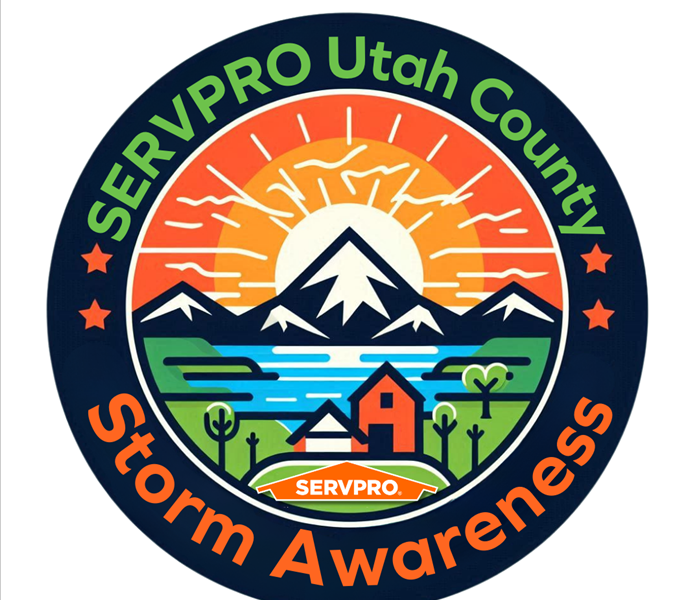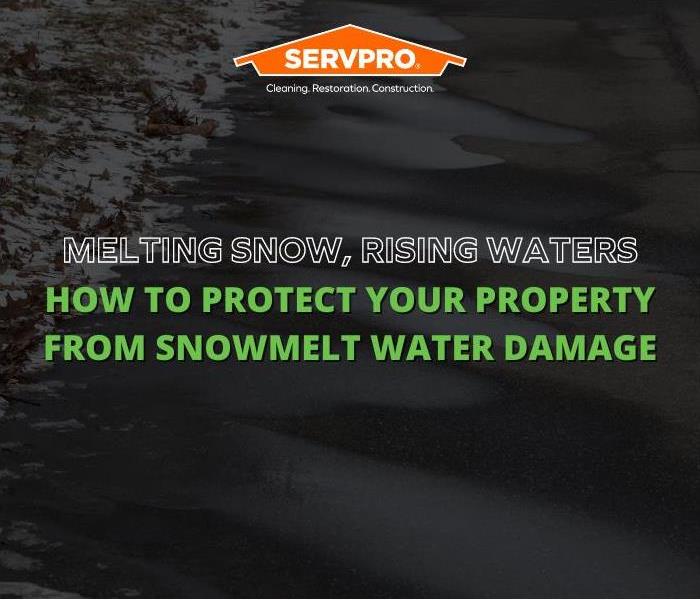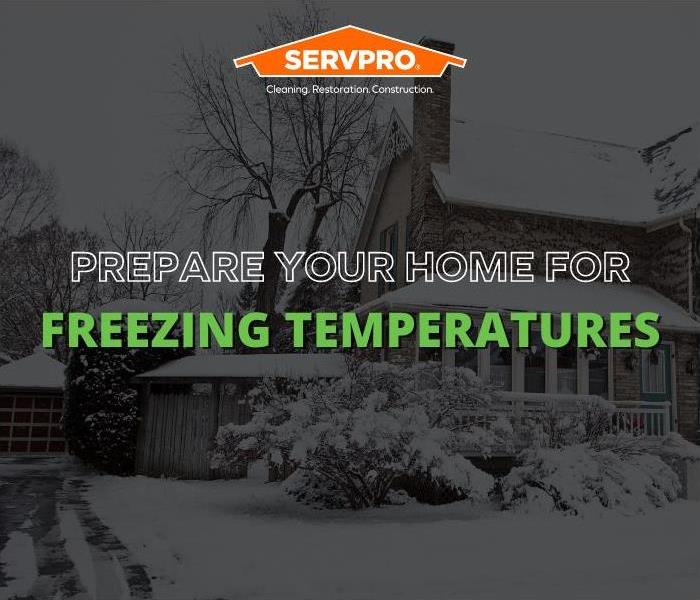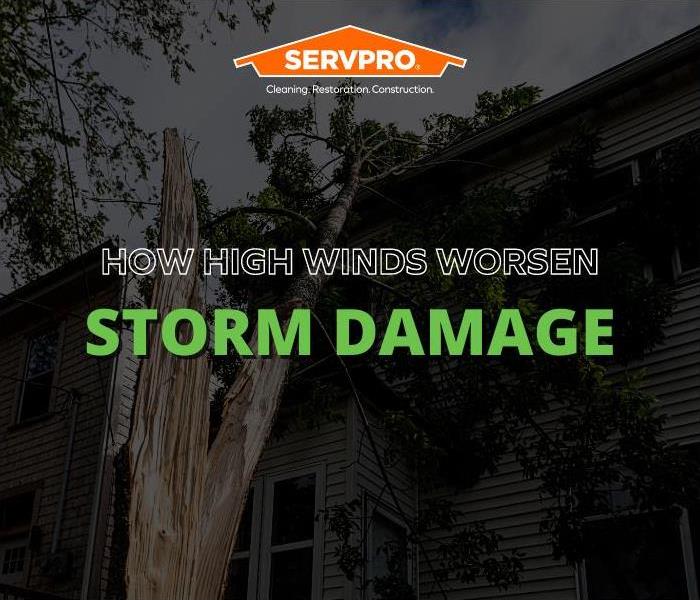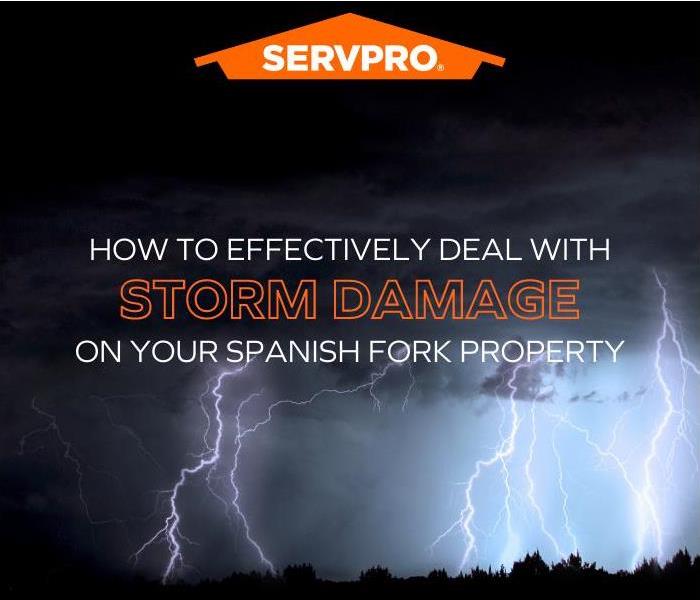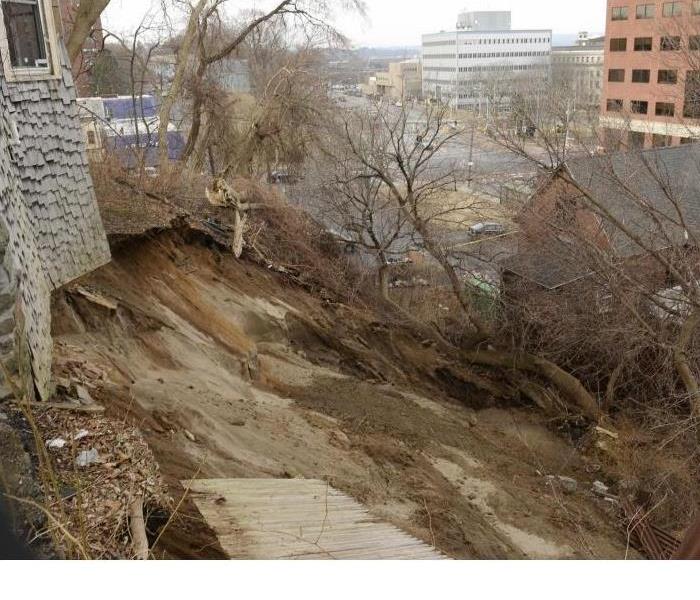Recent Storm Damage Posts
SERVPRO of Utah County: Preparing for and Responding to Storms
12/13/2024 (Permalink)
The Impact of Storms in Utah County
Utah County, known for its stunning landscapes and vibrant communities, is not immune to the powerful forces of nature. Storms, whether they bring heavy rains, strong winds, or even snow, can pose significant risks to homes and businesses. Understanding how to prepare for and respond to storm damage is crucial for protecting your property and ensuring safety.
Preparing for Storms
Storm Preparation Tips:
- Create an Emergency Plan: Have a family emergency plan that includes evacuation routes and communication strategies.
- Secure Your Property: Reinforce doors and windows, and secure outdoor furniture and equipment to prevent damage from strong winds.
- Check Drainage Systems: Ensure gutters and downspouts are clear to prevent water buildup and potential flooding.
- Stock Up on Supplies: Keep essential supplies like water, non-perishable food, flashlights, batteries, and a first-aid kit readily available.
Responding to Storm Damage
When a storm hits, the aftermath can be overwhelming. SERVPRO of Utah County is Here to Help® with professional storm damage restoration services, ensuring your property is restored quickly and efficiently.
SERVPRO® Storm Damage Restoration Services:
- Immediate Response: Our team is available 24/7 to respond to storm damage emergencies. We understand the urgency of the situation and act quickly to minimize further damage.
- Thorough Assessment: We conduct a comprehensive assessment of the damage to develop a tailored restoration plan.
- Water Extraction and Drying: Using advanced equipment, we remove standing water and thoroughly dry affected areas to prevent mold growth.
- Structural Repairs: We handle all necessary repairs, from minor fixes to major reconstruction, ensuring your property is restored to its pre-storm condition.
- Mold Remediation: If mold is detected, our certified specialists provide effective remediation to ensure a safe and healthy environment.
The SERVPRO Difference
Why Choose SERVPRO of Utah County?
- Local Expertise: As a locally owned and operated business, we understand the unique challenges posed by Utah County's weather patterns.
- Highly Trained Professionals: Our team undergoes extensive training and holds industry certifications to provide the highest quality service.
- Advanced Technology: We use state-of-the-art equipment and techniques to ensure efficient and thorough restoration.
- Customer Satisfaction: Our commitment to excellence is reflected in our customer reviews and testimonials. We take pride in delivering exceptional service and restoring peace of mind.
Conclusion
Storms can be unpredictable and devastating, but with SERVPRO of Utah County by your side, you can rest assured that your property is in good hands. Our professional storm damage restoration services are designed to get you back on your feet as quickly as possible. Don't wait until the next storm hits—contact SERVPRO of Utah County today to learn more about our services and how we can help you prepare for and recover from storm damage.
What to Do after a Storm ?
12/1/2023 (Permalink)
Cleaning up after a storm can be a big job, whether the damage was caused by a tornado, hurricane, flooding, snow or ice storm. The most important part of the cleanup process is safety, so be sure that the area you’re working on has been deemed safe to enter structurally, and that no electrical, dangerous materials, or other hazards are present.
It’s important to wear the right safety gear when cleaning up after a disaster. According to the Centers for Disease Control and Prevention, this gear includes:
- Hard hats
- Goggles
- N95 masks or a respirator
- Waterproof boots with a steel toe and insole
- Earplugs or protective headphones
- Having two fire extinguishers on site
- It’s a good idea to work with others if you can, and get help lifting heavy items. Try to decide which tasks are the most important and tackle those first.
- Rest when you’re tired.
Don’t hesitate to call SERVPRO if the job seems overwhelming, and especially if water, mold or sewage is involved. During large storm events our Disaster Recovery Team assembles locally with the necessary crews and equipment to handle these extreme cleanup situations that require extra resources.
What to Do After a Hurricane Strikes
9/5/2023 (Permalink)
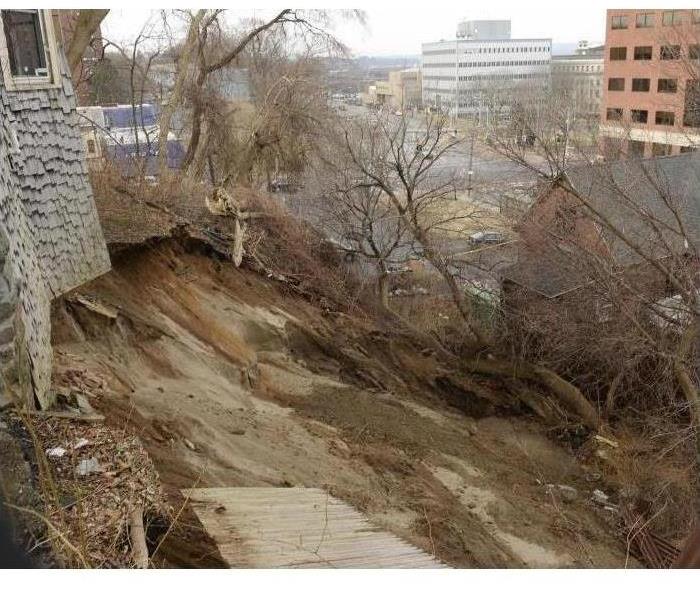 When devastation hits SERVPRO is there.
When devastation hits SERVPRO is there.
Recently the many areas have been hit by severe hurricanes and many homes and businesses have devastating damage. If you have been a victim follow these 5 must do's provided by "Today's Homeowner with Danny Lipford.
https://www.todayshomeowner.com/top-5-must-dos-after-a-hurricane-damages-your-home/
1- Photograph and Document Damage: Document the damage thoroughly with photos, as it will make the insurance claims process much easier. In addition to photos, keep a running list of all damaged items.
2-Conduct Emergency Repairs: Do only what's necessary to prevent further damage after a storm, such as covering broken windows with plastic or roofs with tarps to keep rain out. Don’t make or commission permanent repairs until an insurance adjuster reviews the damage. While it may be tempting to start cleaning up and throwing out damaged items after the storm, your insurance adjuster needs to see what happened firsthand to make you the best offer to settle your claim.
3- Secure Home Inventory: All home insurance policyholders should compile a home inventory of their possessions before a storm strikes, and keep it in a safe place. A home inventory is a list that documents the contents of your home. It should include photos, detailed descriptions, and purchase receipts when possible. Having a home inventory will make the claims process much easier. If you don’t currently keep a home inventory, start one as soon as possible. 4- File a Claim ASAP: Insurance companies sometimes work on a first-come, first-served basis; so it's in your best interest to file an insurance claim as soon as possible. When you contact your provider, let them know the extent of the damages and that you have an inventory of your possessions. An insurance adjuster will come to your property, assess the damage, and determine the size of your payout. 5- Secure Safe Lodging: If you home is uninhabitable, you’ll need to find your family a safe place to stay while your home is being repaired. The loss of use coverage in a standard homeowner insurance policy typically helps pay for your family's lodging as long as the damage is part of a covered claim. Check your policy or ask your agent to make sure you have this coverage and to determine its monetary value and time limits.
Suffering damage or loss from a hurricane can be devastating, and recovery takes time. If you are prepared and plan in advance, repairing the damage will go much smoother.
Remember to be patient during the claims process. With the proper preparation, things will be back to normal soon.
Restoring Business After the Storm: Why Choose SERVPRO for Commercial Property Storm Damage Restoration
7/18/2023 (Permalink)
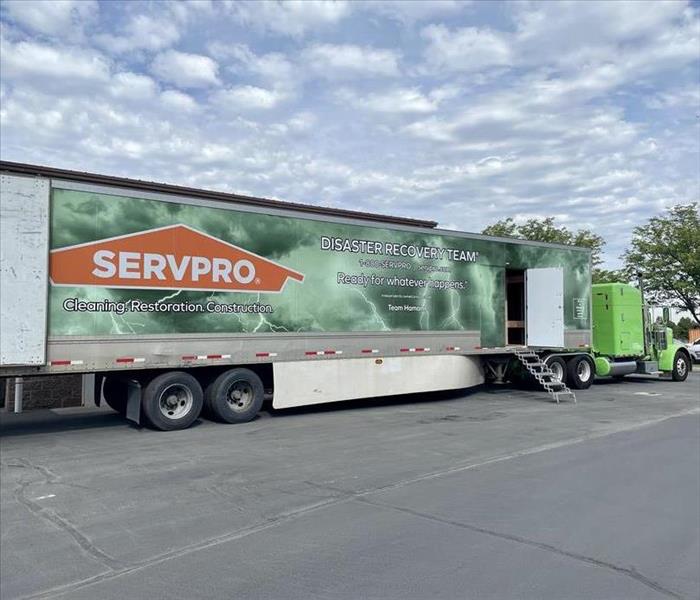 Our SERVPRO Large Loss Team preparing for Storm jobs. We're Ready for Whatever Happens.
Our SERVPRO Large Loss Team preparing for Storm jobs. We're Ready for Whatever Happens.
When storms strike, they can leave a trail of destruction in their wake, especially for commercial properties. If you're faced with storm damage and in need of reliable restoration services, look no further than SERVPRO. Here's why you should choose SERVPRO for your commercial property's storm damage restoration needs.
- Rapid Response: Time is of the essence when it comes to storm damage. SERVPRO understands this and responds swiftly to your call for help. Their 24/7 emergency services ensure that a team of experts will be on-site promptly to assess the damage and begin the restoration process immediately.
- Extensive Experience: With years of experience in storm damage restoration, SERVPRO has encountered and successfully handled a wide range of storm-related issues. Their skilled technicians have the knowledge, expertise, and training necessary to navigate the complexities of commercial property restoration effectively.
- Comprehensive Services: SERVPRO offers a comprehensive range of storm damage restoration services tailored to meet the specific needs of commercial properties. From water extraction and structural drying to debris removal and mold remediation, they have the resources and equipment to handle every aspect of the restoration process.
- Advanced Technology and Techniques: SERVPRO stays up-to-date with the latest advancements in restoration technology and techniques. They utilize state-of-the-art equipment, including powerful extractors, air movers, and dehumidifiers, to expedite the drying process and minimize secondary damages. Their innovative approaches ensure efficient and effective restoration.
- Expert Insurance Assistance: Dealing with insurance claims can be overwhelming, especially after storm damage. SERVPRO works closely with insurance companies and can assist you throughout the claims process. Their experience and knowledge in dealing with insurance matters can help streamline the process and ensure you receive the coverage you deserve.
- Minimal Business Interruption: SERVPRO understands the importance of minimizing business interruption during the restoration process. They work diligently to restore your property swiftly, allowing you to resume your operations as soon as possible. Their goal is to get your business back up and running smoothly without unnecessary delays.
- Exceptional Customer Service: SERVPRO values their customers and prioritizes their satisfaction. From the initial assessment to the final restoration, they maintain open and transparent communication. Their dedicated team is responsive to your questions and concerns, ensuring you are informed and involved throughout the entire restoration journey.
When storm damage affects your commercial property, choosing SERVPRO for restoration services is a smart decision. Their rapid response, extensive experience, comprehensive services, advanced technology, insurance assistance, minimal business interruption, and exceptional customer service set them apart. Trust SERVPRO to restore your commercial property to its pre-storm condition efficiently and effectively, allowing you to focus on rebuilding and moving forward.
Melting Snow, Rising Waters: How to Protect Your Property from Snowmelt Water Damage
3/30/2023 (Permalink)
As winter comes to an end, the arrival of spring often brings with it warmer temperatures, longer days, and the promise of new growth. However, it can also bring an increased risk of water damage due to snowmelt. As snow and ice begin to thaw, the water can seep into homes and businesses, causing significant damage if not addressed promptly.
The Risks of Snowmelt Water Damage
Snowmelt water damage can occur when the thawed snow and ice infiltrate roofs, walls, and basements, causing flooding, mold growth, and structural damage. It can also cause damage to personal belongings, furniture, and electronics, leading to costly repairs or replacements.
The Risks of Delaying Water Damage Restoration
Ignoring water damage caused by snowmelt can result in costly repairs, especially if left unattended for a long time. Mold and mildew can start growing within 48 hours of water exposure, leading to a dangerous environment for your health. Furthermore, delaying repairs to your property could also cause long-term structural damage, which could potentially lead to more extensive and expensive repairs in the future.
Steps You Can Take to Protect Your Property
Fortunately, there are several steps you can take to protect your property from snowmelt water damage:
1. Clear Your Gutters and Downspouts: Make sure that your gutters and downspouts are clear of debris to allow proper drainage of melting snow and ice.
2. Check Your Sump Pump: Ensure that your sump pump is working correctly, and that the discharge line is free from obstruction.
3. Inspect Your Roof: Check for any damage or leaks in your roof, especially after heavy snow and ice accumulations.
4. Keep Your Property Warm: Keep your property warm and well-ventilated to prevent water from freezing and thawing in your walls or pipes.
5. Seek Professional Help: Contact a professional restoration company like SERVPRO of Utah County at the first sign of water damage to avoid more extensive and costly repairs in the future.
At SERVPRO of Utah County, we have the experience, training, and equipment to restore your property to its pre-damage condition. Contact us today for prompt and professional water damage restoration services.
How can you prepare your home for freezing temperatures?
2/10/2023 (Permalink)
Winter weather can be harsh and unforgiving, so it's important to prepare your home for the freezing temperatures ahead. Here are some tips to help you get started:
Insulate your home: Insulation is key to keeping the warmth inside your home during the winter months. Check the insulation in your walls, roof, and floors and add more if necessary. You can also use draft stoppers to block any gaps around doors and windows to prevent heat from escaping.
Service your heating system: Before the cold weather sets in, it's a good idea to have your heating system serviced by a professional. This will help ensure that it's running efficiently and safely. If you have an older system, consider upgrading to a newer, more efficient model.
Protect your pipes: Frozen pipes can cause significant damage, so it's important to take steps to prevent them from freezing. Insulate pipes that are located in unheated areas such as the garage or attic. Letting faucets drip a little during cold spells can also help prevent pipes from freezing. Additionally, it's a good idea to keep your home at a consistent temperature, even when you're away, to help prevent pipes from freezing.
By taking these steps to prepare your home for winter, you can help ensure that you and your family stay warm and comfortable throughout the coldest months of the year.
How High Winds Worsen Storm Damage
12/23/2022 (Permalink)
The severity of hurricane damage is well known, but high winds that accompany any adverse weather can cause storm damage to a commercial structure in Utah County. A brief explanation of the risks of property damage associated with strong winds can prepare commercial property owners and managers to manage the effects of wind damage.
Wind Causes Roof Damage
When wind speeds pick up, the risk of property damage posed by any type of adverse weather becomes more severe. The roof of a commercial structure is prone to all of the following types of wind damage:
- Damaging roof fixtures
- Detaching or loosening roofing materials
- Tearing off flashing or sheathing
The maintenance measures that are necessary to withstand strong winds vary with the type of roof on a commercial building. A built-up roof or membrane should be in good enough condition to protect the building's interior.
Wind Damage Can Compromise an Enclosure
The doors and windows of a structure can blow open and admit wind and debris into the interior. A building enclosure or envelope includes the roof, these features, and exterior walls. In the case of hurricane damage, any part of a building's exterior may be susceptible to sustaining damage that can also affect the interior.
Severe Storm Damage May Result
Recognizing the risk of property damage posed by wind is the first step toward preparing a commercial structure for this threat. Regular property maintenance and storm damage equipment such as shutters may limit the damage caused by wind and related weather systems.
While it is impossible to prevent wind damage, commercial property owners may be able to take measures to reduce its severity. From maintaining roofing, trimming surrounding trees, and securing or stowing items kept outside to installing storm shutters to protect against hurricane damage, it is worthwhile to take a proactive approach to prepare for storm damage in Utah County.
Is this Flood Black Water?
9/8/2022 (Permalink)
 If your home floods, call SERVPRO of Utah County at 801-785-5228
If your home floods, call SERVPRO of Utah County at 801-785-5228
Watching floodwaters flow into your Utah County home is one of the most devastating things you can witness. Not only will the contents of your home be damaged, but the structure could also be. Water damage begins immediately, so it's imperative to eliminate and clean it as soon as possible. However, you first must determine what kind of water it is. This depends partially on the origin of the flood. There are three categories of water, each of which presents a different level of risk to your family and pets:
- Category 1: Known as clean water, this is safe to drink, equivalent to the water that comes out of the tap. It could result from a burst pipe or leaky appliance. Although it's clean to begin with, it will become hazardous if it comes into contact with a contaminated surface or substance.
- Category 2: Also known as gray water, it could make people and pets sick if consumed but is not toxic. The water may come from bathtubs, washing machines or dishwashers.
- Category 3: Black water is toxic due to high contamination. The water may contain raw sewage, viruses, bacteria, or harsh chemicals. They can be poisonous to humans and pets and cause more property damage than clean or gray water.
How Do I Safely Clean Black Water?
If you find that you have a Category 3 flood, you must take extra precautions to protect everyone in your home and the property itself. The best option is to hire water damage restoration experts to ensure the job is handled safely, thoroughly and quickly.
- Protect Yourself With PPE
Safety is the most critical aspect, so wearing personal protective equipment from beginning to end anytime you're in the affected area is essential. This PPE generally includes the following:
- Hair coverings
- Eye protection
- Mask or respirator
- Waterproof coveralls
- Waterproof gloves
- Waterproof boots or shoe coverings
This PPE should be put on before entering the area, taken off before leaving the site, and then replaced when returning to the area.
- Shut Off the Electricity
Before entering the affected area, it's vital to shut off the electricity to that part of the house or the whole house. Otherwise, an electrical current could be flowing through the standing water, which is highly unsafe for humans and pets.
- Remove Water and Moisture
Extract all the standing water with a wet/dry vacuum if you have one. If not, mops and towels should be sufficient.
- Clear the Area
Clear everything out of the affected area as much as possible. This will also allow more room for cleaning and drying the flooded area. You will probably have unsalvageable items to throw away and other items that will need to dry out.
- Clean and Sanitize
Everything the water has touched needs to be cleaned and sanitized. This includes floors, walls and furniture. It must be disposed of if it can't be adequately cleaned and dried.
- Dry Everything
Finally, everything must be dried thoroughly and quickly. Mold can start growing and spreading within 24 hours of moisture exposure, so it's essential to remove excess moisture from the area. You can use fans, dehumidifiers, fresh air and heaters to assist the drying process.
Water damage advances quickly, especially in the case of a flood. Black water adds another hazardous element to the mix. It's helpful to know about the risks before a disaster transpires.
How to Effectively Deal with Storm Damage on Your Spanish Fork Property
7/18/2022 (Permalink)
Every year in the United States, storm damage, wind damage and river flooding cause billions of dollars in property losses. Knowing how to effectively deal with flooding from storms, wind damage and river flooding is crucial. In the event of flooding caused by storm damage, wind damage or river flooding, the single most important thing that you can do is to call in a professional company for storm remediation. Any time storm damage hits, the professionals in storm restoration at SERVPRO of Utah County are your best bet for a successful storm remediation.
The process of storm remediation.
Business or home restoration after a storm damage event always begins with a call to your local Spanish Fork storm restoration company. It is crucial to remember that whenever a property is hit by wind damage, storm damage or flooding, whether caused by roof leaks, frozen pipes or river flooding, every minute counts. Calling in your local professional storm restoration company will give your property the best chance at a successful storm remediation.
Flooding is a major cause of damage from storms
Flood water can quickly accumulate in homes that have been hit by storms. This can occur due to rainfall creating standing flood water around the home or business. But it is even more often caused by roof damage such as the attendant roof leaks. It is crucial that any property with roof damage immediately undergo roof repair. Roof damage and roof leaks can quickly lead to the massive accumulation of flood water within the home. Roof repairs should always be carried out by a licensed, professional home restoration company. Failure to do so can make roof leaks worse or recur. This type of roof damage can lead to catastrophic amounts of flood water damage in the Spanish Fork home.
A professional roof repair team will be able to quickly survey the damage and make the appropriate roof repairs. Home restoration companies will also have highly trained specialists on staff who can handle water restoration efforts. The team will use advanced, submersible flood pumps to carry out a swift water restoration. Using mobile flood pumps capable of removing thousands of gallons per hour, the water restoration team will be able to clear all standing water with the flood pumps within an hour. This crucial step is not possible without a trained water restoration team and industrial flood pumps.
Hail damage, ice damage and frozen pipes
Home restoration companies operating in more Northern climates are adept at handling winter storm damage. Frozen pipes, ice damage and hail damage are not only major causes of flooding but can also cause extreme physical damage to properties. Ice damming is another serious concern in winter storms.
When an ice dam forms, water can no longer run off the roof and may pool underneath the ice dam. This ice damming can cause water to be forced through tiny leaks. Ice dams have been known to cause roof failures. For this reason, any sign of ice damming needs to be handled quickly by a professional. Ice dams can potentially lead to catastrophic, sudden roof collapse. Therefore, all ice damming needs to be addressed at once.
A professional storm restoration team will also be adept at melting and replacing frozen pipes as well as repairing any ice damage or hail damage that has occurred to the structure. Ice damage and hail damage can both cause serious and extensive damage to structures. Therefore, they should always be quickly addressed by a team of trained and licensed professionals.
Visit https://www.SERVPROofnorthutahcounty.com/ for more information on storm damage.
How to Effectively Deal with Storm Damage on Your American Fork Property
6/9/2022 (Permalink)
 Being knowledgeable on how to deal with Storm Damage that has affected your American Fork home is crucial.
Being knowledgeable on how to deal with Storm Damage that has affected your American Fork home is crucial.
How to Effectively Deal with Storm Damage on Your American Fork Property
Every year in the United States, storm damage, wind damage and river flooding cause billions of dollars in property losses. Knowing how to effectively deal with flooding from storms, wind damage and river flooding is crucial. In the event of flooding caused by storm damage, wind damage or river flooding, the single most important thing that you can do is to call in a professional company for storm remediation. Any time storm damage hits, the professionals in storm restoration at SERVPRO of Utah County are your best bet for a successful storm remediation.
The process of storm remediation.
Business or home restoration after a storm damage event always begins with a call to your local American Fork storm restoration company. It is crucial to remember that whenever a property is hit by wind damage, storm damage or flooding, whether caused by roof leaks, frozen pipes or river flooding, every minute counts. Calling in your local professional storm restoration company will give your property the best chance at a successful storm remediation.
Flooding is a major cause of damage from storms
Flood water can quickly accumulate in homes that have been hit by storms. This can occur due to rainfall creating standing flood water around the home or business. But it is even more often caused by roof damage such as the attendant roof leaks. It is crucial that any property with roof damage immediately undergo roof repair. Roof damage and roof leaks can quickly lead to the massive accumulation of flood water within the home. Roof repairs should always be carried out by a licensed, professional home restoration company. Failure to do so can make roof leaks worse or recur. This type of roof damage can lead to catastrophic amounts of flood water damage in the American Fork home.
A professional roof repair team will be able to quickly survey the damage and make the appropriate roof repairs. Home restoration companies will also have highly trained specialists on staff who can handle water restoration efforts. The team will use advanced, submersible flood pumps to carry out a swift water restoration. Using mobile flood pumps capable of removing thousands of gallons per hour, the water restoration team will be able to clear all standing water with the flood pumps within an hour. This crucial step is not possible without a trained water restoration team and industrial flood pumps.
Hail damage, ice damage and frozen pipes
Home restoration companies operating in more Northern climates are adept at handling winter storm damage. Frozen pipes, ice damage and hail damage are not only major causes of flooding but can also cause extreme physical damage to properties. Ice damming is another serious concern in winter storms.
When an ice dam forms, water can no longer run off the roof and may pool underneath the ice dam. This ice damming can cause water to be forced through tiny leaks. Ice dams have been known to cause roof failures. For this reason, any sign of ice damming needs to be handled quickly by a professional. Ice dams can potentially lead to catastrophic, sudden roof collapse. Therefore, all ice damming needs to be addressed at once.
A professional storm restoration team will also be adept at melting and replacing frozen pipes as well as repairing any ice damage or hail damage that has occurred to the structure. Ice damage and hail damage can both cause serious and extensive damage to structures. Therefore, they should always be quickly addressed by a team of trained and licensed professionals.
Visit https://www.SERVPROofnorthutahcounty.com/ for more information on storm damage.
What if an Earthquake happened in Utah?
4/21/2022 (Permalink)
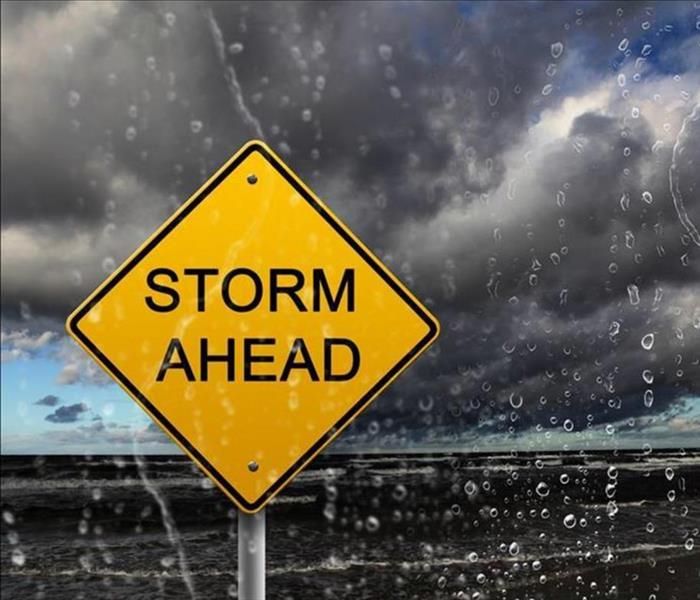 The world is can be a crazy place and unexpected. Be prepared if at all possible.
The world is can be a crazy place and unexpected. Be prepared if at all possible.
Earthquake
Living in Utah might have you wondering why we too should be ready for when storms come. Utah does not see many major storms throughout the year but storms should still be something we prepare ourselves for. With the latest earthquakes, we really should be making sure we are prepared.
When your home is hit by a flood or storm, or earthquake remember that your local SERVPRO of Utah County is here to restore your home to its pre-storm condition. We specialize in restoring homes and buildings in a quick and timely manner so that you and your family could go back into your normal routine.
Some tips:
-Make an emergency plan
-Protect your home
- If you are in a car, pull over and stop. Set your parking brake.
- If you are in bed, turn face down and cover your head and neck with a pillow.
- If you are outdoors, stay outdoors away from buildings.
- If you are inside, stay and do not run outside and avoid doorways.
Power Outage.
3/4/2022 (Permalink)
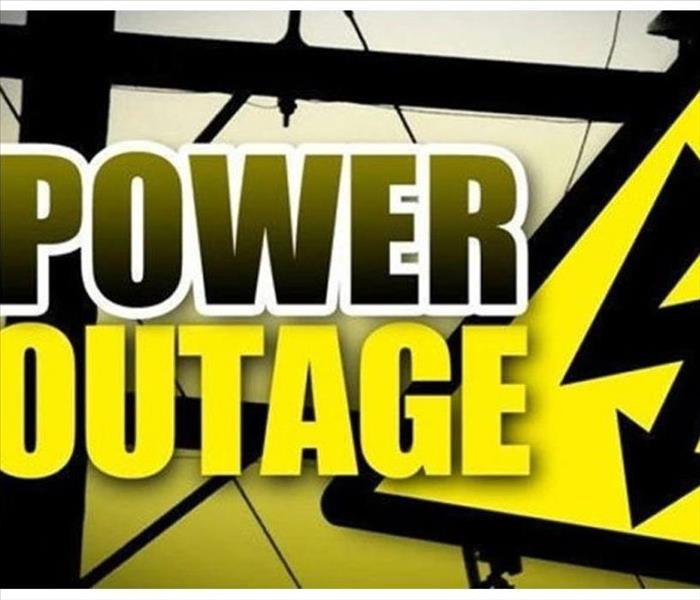 Be prepared for power outages in your area!
Be prepared for power outages in your area!
Surprisingly, power outages are even getting worse in the USA. According to Inside Energy, the annual average of power outages doubles every five years! The reason for this has to do with aging infrastructure, more frequent storms, and problems sustaining the electric grid as populations grow.
Despite how common power outages are, few people are prepared for them and even fewer people know what to do if the power goes out.
Steps to Take Immediately After the Power Goes Out
Step 1: Turn On Your Emergency Lights
Make sure your emergency lights are somewhere accessible in case you have to find them in the dark. Ideally, keep a flashlight in each room of your home.
In general, it is better to use battery-operated lights instead of candles because of the fire risk.
Step 2: See If Your Neighbors Have Power
If your neighbors still have electricity, then the problem is likely inside your home. Start by checking the main fuses or circuit breakers to see if they have blown.
Step 3: Check the Extent of the Problem
If your neighbors also don’t have electricity, you’ll want to see how wide-spread the problem is. You can do this by calling your power supplier. It might take a while to get through to them if a lot of people are trying to call.
You can also try calling friends who live nearby to see if they have power or not.
Step 4: Contact Family Members
During large power outages, stoplights and streetlights can go out too – making it unsafe to drive.
If your family members aren’t at home, get in contact with them. It might be best for them to remain at their current location until it is safer for them to come home.
Note that your family should have a contact plan in place.
Step 5: Unplug Appliances
When the power comes back on, it can cause a huge power spike which may damage electronics.
Hopefully all of your sensitive electronics are on surge protectors.
Even if they are, it is still smart to unplug all of your sensitive (expensive) electronics from the wall so they don’t get damaged when the power comes back on.
Step 6: See if Water is Safe to Drink
When the power goes out, water treatment centers might not work. You could still have clean-looking water coming from the tap, but it might not be safe to drink!
Call your local authorities to see if the water is safe to drink. Or, you can listen to your emergency radio to see if there is a “boil alert” in place.
**If you are unsure whether the water is safe to drink, always play it safe! Treat water before drinking it or use bottled water.
Storm Tips!!
2/10/2022 (Permalink)
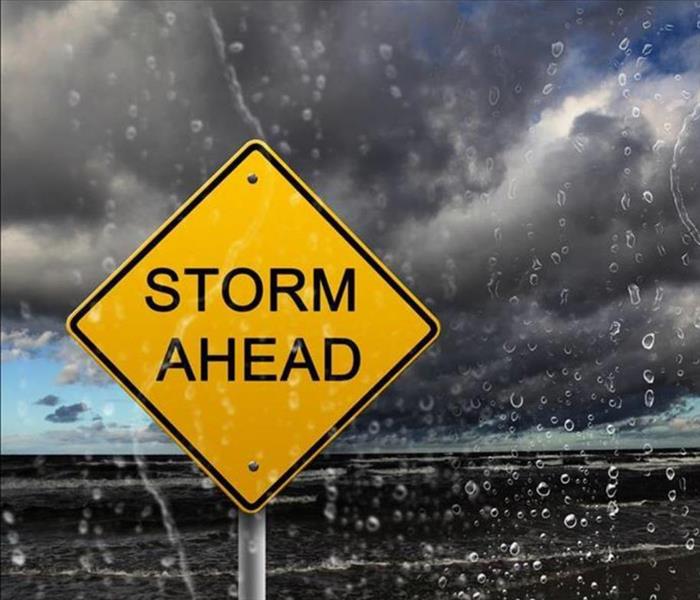 Do you have a plan if a storm hits?
Do you have a plan if a storm hits?
1- Photograph and Document Damage: Document the damage thoroughly with photos, as it will make the insurance claims process much easier. In addition to photos, keep a running list of all damaged items.
2-Conduct Emergency Repairs: Do only what's necessary to prevent further damage after a storm, such as covering broken windows with plastic or roofs with tarps to keep the rain out. Don’t make or commission permanent repairs until an insurance adjuster reviews the damage. While it may be tempting to start cleaning up and throwing out damaged items after the storm, your insurance adjuster needs to see what happened firsthand to make you the best offer to settle your claim.
3- Secure Home Inventory: All home insurance policyholders should compile a home inventory of their possessions before a storm strikes, and keep it in a safe place. A home inventory is a list that documents the contents of your home. It should include photos, detailed descriptions, and purchase receipts when possible. Having a home inventory will make the claims process much easier. If you don’t currently keep a home inventory, start one as soon as possible.
4- File a Claim ASAP: Insurance companies sometimes work on a first-come, first-served basis; so it's in your best interest to file an insurance claim as soon as possible. When you contact your provider, let them know the extent of the damages and that you have an inventory of your possessions. An insurance adjuster will come to your property, assess the damage, and determine the size of your payout.
5- Secure Safe Lodging: If your home is uninhabitable, you’ll need to find your family a safe place to stay while your home is being repaired. The loss of use coverage in a standard homeowner insurance policy typically helps pay for your family's lodging as long as the damage is part of a covered claim. Check your policy or ask your agent to make sure you have this coverage and to determine its monetary value and time limits.
Suffering damage or loss from a hurricane can be devastating, and recovery takes time. If you are prepared and plan in advance, repairing the damage will go much smoother.
Remember to be patient during the claims process. With the proper preparation, things will be back to normal soon.
Snow storms are coming this week. Stay safe and warm.
12/29/2021 (Permalink)
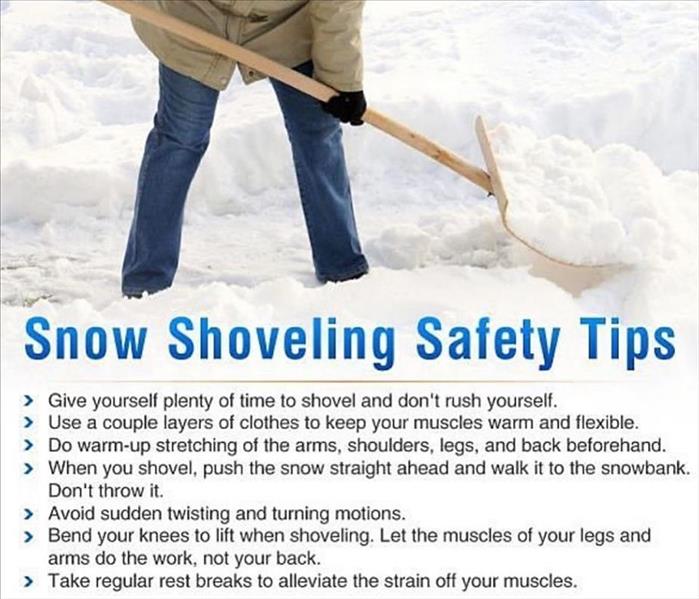 Here are also some tips on how to shovel snow safely and not hurt yourself.
Here are also some tips on how to shovel snow safely and not hurt yourself.
It's that time of the year again, time to prepare ourselves and our homes for the brutal cold of winter storms. Being prepared can make things a lot easier on yourself.
Follow these tips recommended by www.ready.gov/winter-weather to prepare yourself and your home for winter.
Before Snowstorms and Extreme Cold
- Make a family communication plan. Your family may not be together when disaster strikes, so it is important to know how you will contact one another, how you will get back together, and what you will do in case of an emergency.
- Make an emergency kit for at least three days of self-sufficiency.
- Keep space heater safety in mind: Use electric space heaters with automatic shut-off switches and non-glowing elements. Remember to keep all heat sources at least three feet away from furniture and drapes.
Prepare Your Home
- Make sure your home is well insulated and that you have weather stripping around your doors and window sills to keep the warm air inside.
- Make sure you have a working carbon monoxide detector.
- Keep fire extinguishers on hand, and make sure everyone in your house knows how to use them. House fires pose an additional risk, as more people turn to alternate heating sources without taking the necessary safety precautions.
- Learn how to shut off water valves (in case of a pipe burst).
- Insulate your home by installing storm windows or covering windows with plastic from the inside to keep cold air out.
- If you have a wood-burning fireplace, consider storing wood to keep you warm if winter weather knocks out your heat. Also, make sure you have your chimney cleaned and inspected every year.
- Have at least one of the following heat sources in case the power goes out:
- Extra blankets, sleeping bags, and warm winter coats
- Fireplace or wood-burning stove with plenty of dry firewood, or a gas log fireplace
- Make sure you have a cell phone with an emergency charging option (car, solar, hand crank, etc.) in case of a power failure.
- Plan to bring pets inside.
- Know where the manual release lever of your electric garage door opener is located and how to operate it in case you lose power.
Follow these recommended tips and you will be prepared for those cold winters days.
SERVPRO takes on New York!
9/15/2021 (Permalink)
 Such a cool experience to be there for 9/11. Proud to fly that flag. Thank you to all those men and women!
Such a cool experience to be there for 9/11. Proud to fly that flag. Thank you to all those men and women!
Did you know we have a SERVPRO of Utah County crew in New York helping with the recent flooding? They were able to visit the 9/11 Memorial this last weekend. What a cool experience to be there for 20 year anniversary.
New York had severe flooding a few weeks ago and has caused a lot of damage to commercial buildings and residential homes.
We have a storm team here in Utah that is ready for any large disaster. We have been to Texas, New York, Florida, and Louisiana just to name a few.
The SERVPRO Disaster Recovery Team can provide help whether you're dealing with a tornado, hurricane, blizzard, or flood.TheSERVPROSystem has a network of strategically positioned storm teams on standby should a disaster strike near you. Available 24 hours a day and 365 days a year, we are prepared for the unpredictable.
With the ability to mobilize local command centers, along with the resources of more than 1,700 Franchises nationwide, no disaster is too big.
Water damage to your commercial building? SERVPRO can help
7/20/2021 (Permalink)
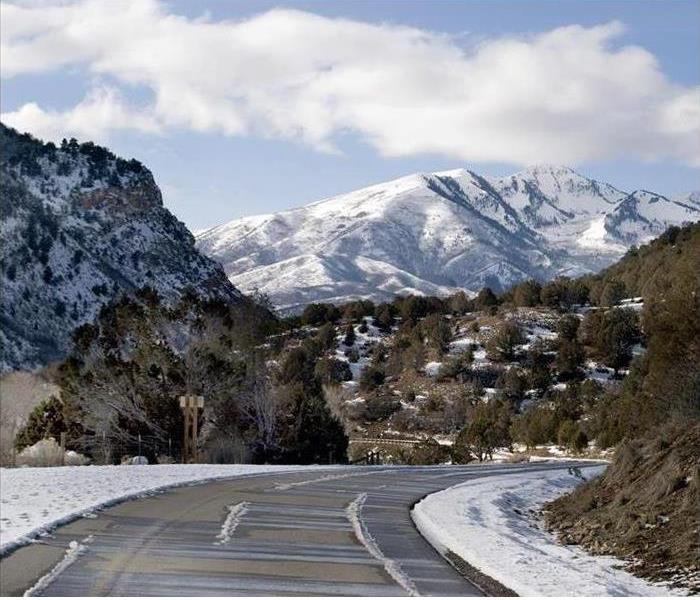 Don't let damage to your business get you down. Call SERVPRO to help we will restore it back to new.
Don't let damage to your business get you down. Call SERVPRO to help we will restore it back to new.
One of the most rewarding things about running a Lehi restaurant is giving your customers a positive experience every time that they step through your doors. Small disasters can sometimes pose a significant threat to this positive experience, however, and you need to get the mess cleaned up quickly and thoroughly to prevent lasting damages to the building.
Every business owner focuses on cutting out the extra spending, even when it comes to approaching water damages to their Orem eatery. Most believe that these situations can get taken care of without professional intervention, but this is rarely the case. There are effects and lingering damages that can continue to affect your restaurant long after the initial mess has gotten seemingly cleaned up.
One of the things that you need to consider when it comes to cleaning up a mess like this is the far-reaching effects of water spreading throughout areas of your restaurant. With various flooring materials and drywall, saturation can occur in a brief period which puts a timeline on when the damage must get restored before the material becomes unsalvageable. Our SERVPRO team can say that We’re Faster To Any Size Disaster because that is the commitment that we have made to the clients we serve throughout the area.
Another reason that you should consider our SERVPRO restoration services for the water damage in your facility is adverse secondary effects. Lingering water and moisture can allow mold spores present in the environment to seat and colonize. When running a restaurant, mold damage is one of the situations that could stop your business in its tracks and prove costly to remediate and verify that the health hazard of mold exposure has gotten successfully removed.
Operating a restaurant has many rewarding aspects, but when you sustain water damages in your facility, you need to act quickly to ensure that the problem does not get worse. Our SERVPRO of North Utah County water restoration technicians are standing by 24/7 at (801) 785-5228.
Power outage tips and tricks!
6/10/2021 (Permalink)
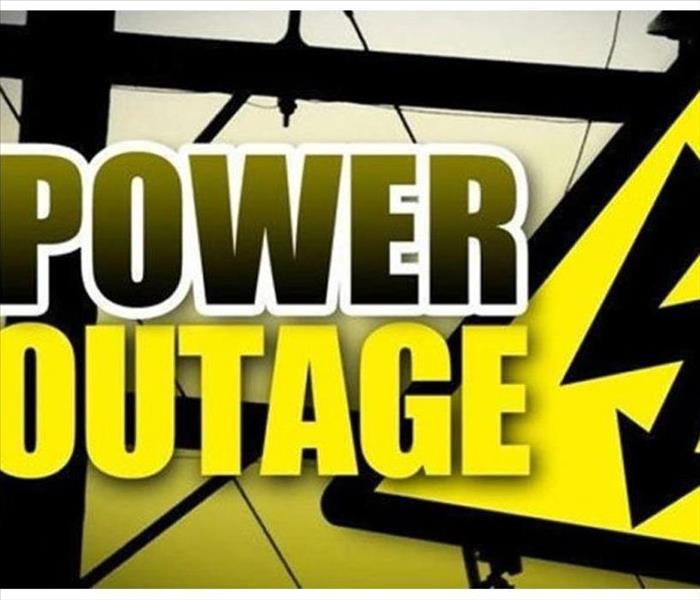 Hopefully, these 12 steps will help you be more prepared for your next power outage.
Hopefully, these 12 steps will help you be more prepared for your next power outage.
Surprisingly, power outages are even getting worse in the USA. According to Inside Energy, the annual average of power outages doubles every five years! The reason for this has to do with aging infrastructure, more frequent storms, and problems sustaining the electric grid as populations grow.
Despite how common power outages are, few people are prepared for them and even fewer people know what to do if the power goes out.
Steps to Take Immediately After the Power Goes Out
Step 1: Turn On Your Emergency Lights
Make sure your emergency lights are somewhere accessible in case you have to find them in the dark. Ideally, keep a flashlight in each room of your home.
In general, it is better to use battery-operated lights instead of candles because of the fire risk.
Step 2: See If Your Neighbors Have Power
If your neighbors still have electricity, then the problem is likely inside your home. Start by checking the main fuses or circuit breakers to see if they have blown.
Step 3: Check the Extent of the Problem
If your neighbors also don’t have electricity, you’ll want to see how widespread the problem is. You can do this by calling your power supplier. It might take a while to get through to them if a lot of people are trying to call.
You can also try calling friends who live nearby to see if they have power or not.
Step 4: Contact Family Members
During large power outages, stoplights and streetlights can go out too – making it unsafe to drive.
If your family members aren’t at home, get in contact with them. It might be best for them to remain at their current location until it is safer for them to come home.
Note that your family should have a contact plan in place.
Step 5: Unplug Appliances
When the power comes back on, it can cause a huge power spike which may damage electronics.
Hopefully, all of your sensitive electronics are on surge protectors.
Even if they are, it is still smart to unplug all of your sensitive (expensive) electronics from the wall so they don’t get damaged when the power comes back on.
Step 6: See if Water is Safe to Drink
When the power goes out, water treatment centers might not work. You could still have clean-looking water coming from the tap, but it might not be safe to drink!
Call your local authorities to see if the water is safe to drink. Or, you can listen to your emergency radio to see if there is a “boil alert” in place.
**If you are unsure whether the water is safe to drink, always play it safe! Treat water before drinking it or use bottled water.
Step 7: Keep Fridge and Freezer Closed
According to Ready.gov, food kept in an unopened refrigerator will stay cold for about 4 hours.
A full freezer will keep its temperature for about 48 hours. You can learn more about this on their food safety page.
Step 8: Save Your Phone’s Battery
Turn off any power-consuming apps on your phone to save its battery. Do this even if you have a solar charger because you might not always be able to charge it.
Step 9: Stay Cool (Summer Power Outages)
If the power outage occurs during a heatwave and you have health conditions, then you might need to evacuate your home to a cooler location, such as a shopping mall or church.
Step 10: Stay Warm (Winter Power Outages)
If the power outage occurs during winter, now is the time to start using your emergency heating method. A wood stove is my personal favorite off-grid heating method.
Be cautious about using generators, camp stoves, or grills for heating as they can cause carbon monoxide poisoning.
You can get some passive solar heating during the daytime by keeping all curtains closed except those on south-facing windows. Close all drapes at night to trap some heat, and line windows and doorways with towels to prevent heat from escaping.
Step 11: Prevent Pipes from Freezing (Winter Power Outages)
Hopefully, your pipes are well insulated so they don’t freeze. The easiest way to prevent pipes from freezing during power outages is to let a small stream of water flow through the faucets.
For long-term power outages during extreme weather, you’ll want to drain your hot water heater. You will also need to winterize the drainage system by putting antifreeze into the drain traps below toilets, sinks, washing machines, etc.
12. Stay Sane!
Play games, make shadow puppets, hang out with the neighbors in the dark… You might even enjoy the power outage and the digital detox it gives you!
https://www.primalsurvivor.net/steps-after-power-outage/
Earthquakes are unpredictable. Be prepared.
6/1/2021 (Permalink)
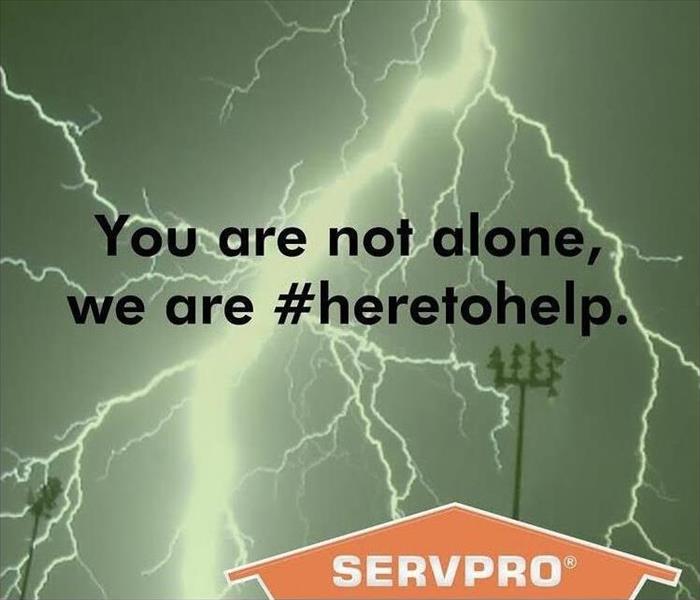 Earthquakes are so unpredictable. SERVPRO is here to help.
Earthquakes are so unpredictable. SERVPRO is here to help.
Earthquake
Living in Utah might have you wondering why we too should be ready for when storms come. Utah does not see many major storms throughout the year but storms should still be something we prepare ourselves for. With the latest earthquakes, we really should be making sure we are prepared.
When your home is hit by a flood or storm, or earthquake remember that your local SERVPRO of North Utah County is here to restore your home to its pre-storm condition. We specialize in restoring homes and buildings in a quick and timely manner so that you and your family could go back into your normal routine.
Hurricane tips!!
3/30/2021 (Permalink)
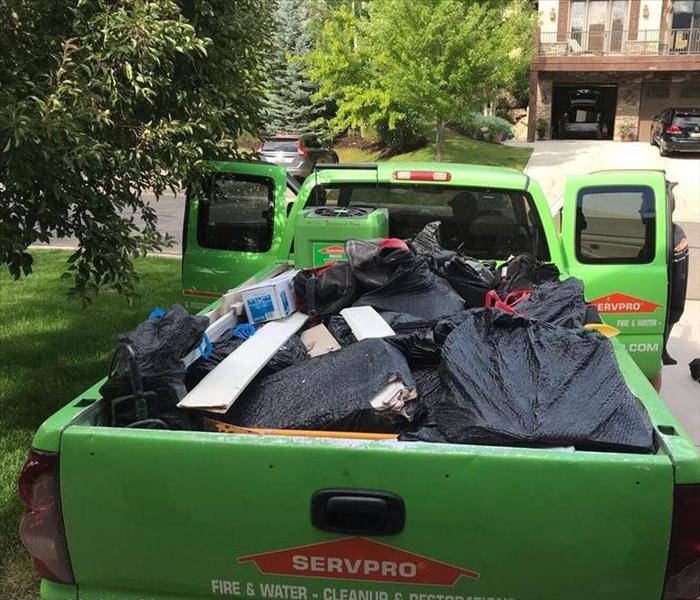 We are here to help if you find yourself in this situation.
We are here to help if you find yourself in this situation.
1- Photograph and Document Damage: Document the damage thoroughly with photos, as it will make the insurance claims process much easier. In addition to photos, keep a running list of all damaged items.
2-Conduct Emergency Repairs: Do only what's necessary to prevent further damage after a storm, such as covering broken windows with plastic or roofs with tarps to keep the rain out. Don’t make or commission permanent repairs until an insurance adjuster reviews the damage. While it may be tempting to start cleaning up and throwing out damaged items after the storm, your insurance adjuster needs to see what happened firsthand to make you the best offer to settle your claim.
3- Secure Home Inventory: All home insurance policyholders should compile a home inventory of their possessions before a storm strikes, and keep it in a safe place. A home inventory is a list that documents the contents of your home. It should include photos, detailed descriptions, and purchase receipts when possible. Having a home inventory will make the claims process much easier. If you don’t currently keep a home inventory, start one as soon as possible.
4- File a Claim ASAP: Insurance companies sometimes work on a first-come, first-served basis; so it's in your best interest to file an insurance claim as soon as possible. When you contact your provider, let them know the extent of the damages and that you have an inventory of your possessions. An insurance adjuster will come to your property, assess the damage, and determine the size of your payout.
5- Secure Safe Lodging: If your home is uninhabitable, you’ll need to find your family a safe place to stay while your home is being repaired. The loss of use coverage in a standard homeowner insurance policy typically helps pay for your family's lodging as long as the damage is part of a covered claim. Check your policy or ask your agent to make sure you have this coverage and to determine its monetary value and time limits.
Suffering damage or loss from a hurricane can be devastating, and recovery takes time. If you are prepared and plan in advance, repairing the damage will go much smoother.
Remember to be patient during the claims process. With the proper preparation, things will be back to normal soon.
Pet emergency plan!
3/23/2021 (Permalink)
 Pets are just as much family as humans. We want to keep them safe as well.
Pets are just as much family as humans. We want to keep them safe as well.
A huge storm has just rolled through or your area has just survived a natural disaster. You have survived and your family is safe but what about your pet? Just like your family you need to have a disaster plan for your pets. Here in Utah we may not experience a hurricane or tornado but we do have harsh wildfire seasons, flooding, and a future forecasted major earthquake. What is good for you is good for your pets, so be prepared and have a plan. Planning ahead is the key to keeping yourself and your pets safe when a disaster strike!
- Microchip your pets
A microchip ID is the best way to ensure you are reunited with your pet if you are separated. Also make sure you keep the microchip info updated: address or phone number changes are commonly overlooked. If you don’t update the information it is useless. You could also list an emergency number of a friend or family member who resides outside of your area.
- Keep A Collar and Tag on ALL Dogs & Cats
Make sure you have the pet's name and at least your current phone number (and address if possible) on the tag. ID on indoor cats is especially important, if there is a disaster they could easily escape.
- Create a Buddy System
Create a buddy system in case you are not home. Make arrangements with a trusted neighbor to check on your pets.
- Identify Local Animal Shelters
Know where the local animal shelters are located in case your pet does get lost. Have a current picture as well to help identify them.
- Locate a Local Veterinary Clinic
Locating a local veterinarian or animal hospital in the area you are staying in case your pet needs medical care.
- Plan a Pet Friendly-Place to Stay
Search in advance of pet-friendly hotels, boarding facilities, or somewhere you can stay. Many emergency shelters are not pet-friendly.
- Prepare an Emergency Kit for EACH Animal
Stock up and be prepared now for items your pet will need during a disaster. Store these items in an easy-to-grab container. Some basic items to include are: one-week food supply, one-week fresh water, medication you pet may need, copies of vaccination records, current picture of you with your pets to identity them and claim ownership, temporary ID tags with the contact info of someone in an unaffected area, carrier and/or leash for each animal.
Remember to prepare now, after the disaster has occurred it is too late. The last thing you want after an emergency or disaster is to have something happen to your furry family members.
How to stay safe during a thunderstorm!
3/11/2021 (Permalink)
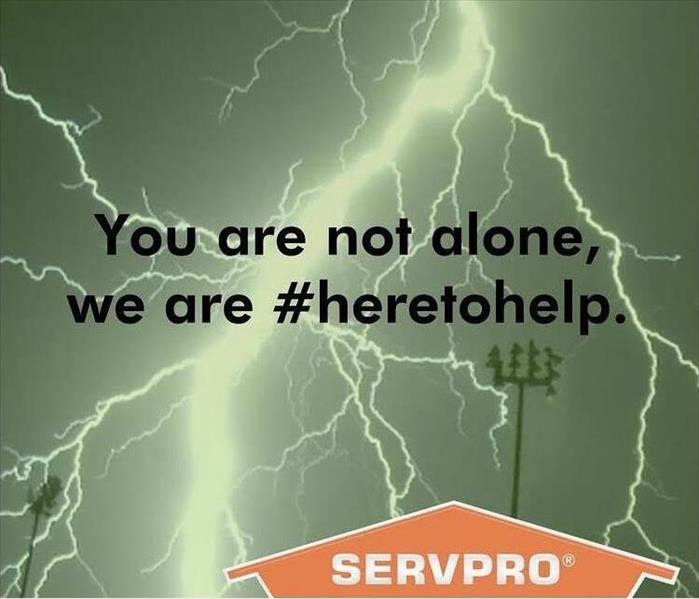 Thunderstorms can be scary and damaging. Be prepared.
Thunderstorms can be scary and damaging. Be prepared.
Thunderstorm tips
~Know your area’s risk for thunderstorms. In most places, they can occur year-round and at any hour.
~Create an emergency plan so that you and your family know what to do, where to go, and what you will need to protect yourselves from the effects of a thunderstorm.
~Sign up for your community’s warning system.
~Identify nearby, sturdy buildings close to where you live, work, study, and play.
~Cut down or trim trees that may be in danger of falling on your home.
~Consider buying surge protectors to protect your home, appliances, and electronic devices.
Snow melt can cause flooding in your Pleasant Grove home!
3/3/2021 (Permalink)
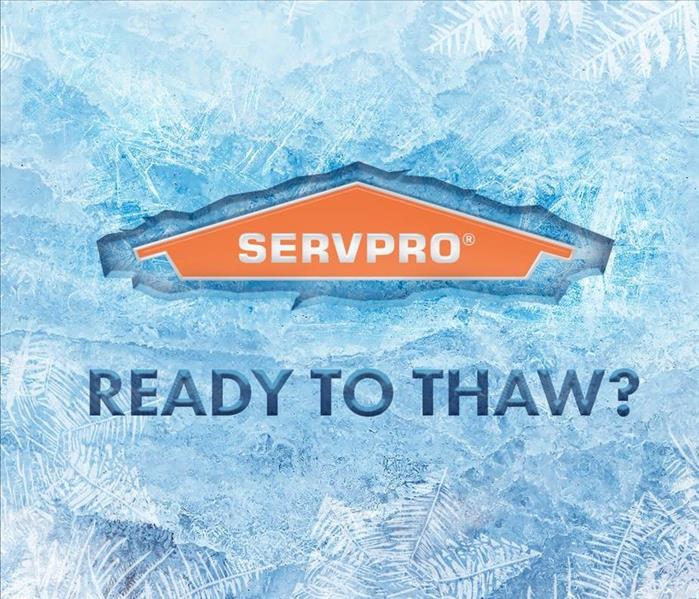 Is your home ready for the run-off of winter?
Is your home ready for the run-off of winter?
Snow Melt Causes Flooding
Spring is coming soon. More and more people start heading outside to soak in the sunshine after a long, cold, snow-packed winter. As temperatures rise snow is melting into Utah's rivers and streams, increasing the risk of flooding. Hopefully, it comes in an orderly fashion, but if it warms up too quickly the snow will overwhelm Utah's rivers and mountains causing concern for many homes.
Follow these tips to help prevent flooding in your home.
- Check for leaks around your doors and windows. Especially basement windows in window wells.
- Keep window wells free from debris
- If you have flood drains make sure they are clear and working
- Check the grading around your home and make changes in grading to encourage flooding away from your home
- Inspect and repair your foundation for cracks before its too late
If you unfortunate and do have water and/or mold damage from flooding in your home call SERVPRO today. Our trained experts are ready for your call.
Call SERVPRO today at 801-785-5228
Snow Covered Roof, Majestic or Dangerous?
1/26/2021 (Permalink)
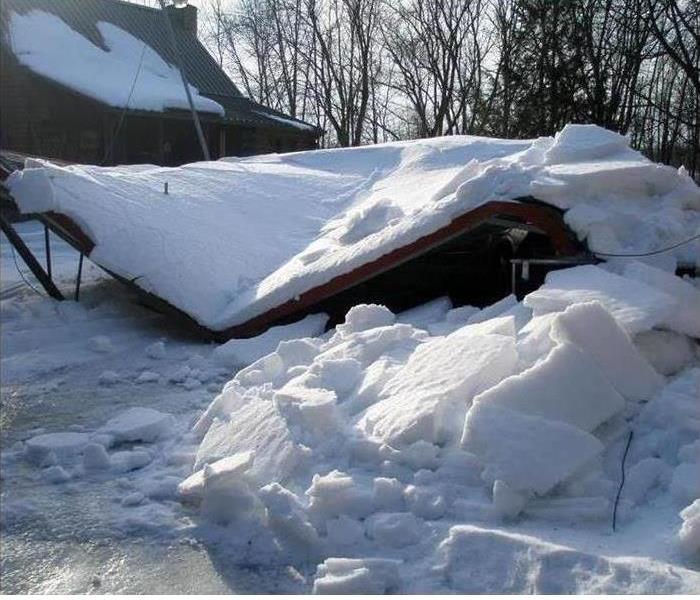 Not so beautiful anymore...
Not so beautiful anymore...
Did you know one square foot of compacted snow can weigh close to 50 pounds?!! Think about how much weight is sitting on your roof. Many roofs, especially, older, flat, or structures such as carports, garages, and sheds are not always rated to support this kind of weight. It is important to remove as much of it as you can safely from the ground.
** We advise you to review your insurance policy and check with your agent before you have a problem. Basic insurance policies do not cover the collapse of a structure due to the weight of snow or ice.
Check out this article from Travelers about safely removing snow from your roof before it is too late.
https://www.travelers.com/resources/weather/winter-storms/roof-snow-removal-tips
Should storms get you worried for your home?
10/28/2020 (Permalink)
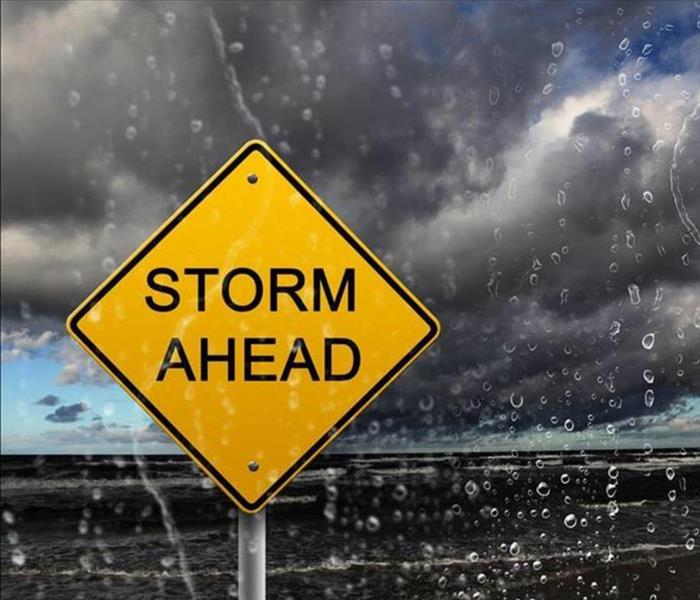 You can't always predict what storms are going to do but calling SERVPRO with home damage from a storm is the smart thing to do!
You can't always predict what storms are going to do but calling SERVPRO with home damage from a storm is the smart thing to do!
Living in Utah might have you wondering why we too should be ready for when storms come. Utah does not see very many major storms throughout the year but storms should still be something we prepare ourselves for.
Specifically, during the rainy and snow season, we must be extra careful. After our super dry, hot summers and how often we have wildfires, a lot of the time our mountains are left without the trees and bushes. We are left more vulnerable to landslides and flash floods from the rain we receive.
When your home is hit by a flood or storm, remember that your local SERVPRO is here to restore your home to its pre-storm condition. We specialize in restoring homes and buildings in a quick and timely manner so that you and your family could go back into your normal routine.
Call SERVPRO at 801-785-5228
Utah wildfires!
7/4/2020 (Permalink)
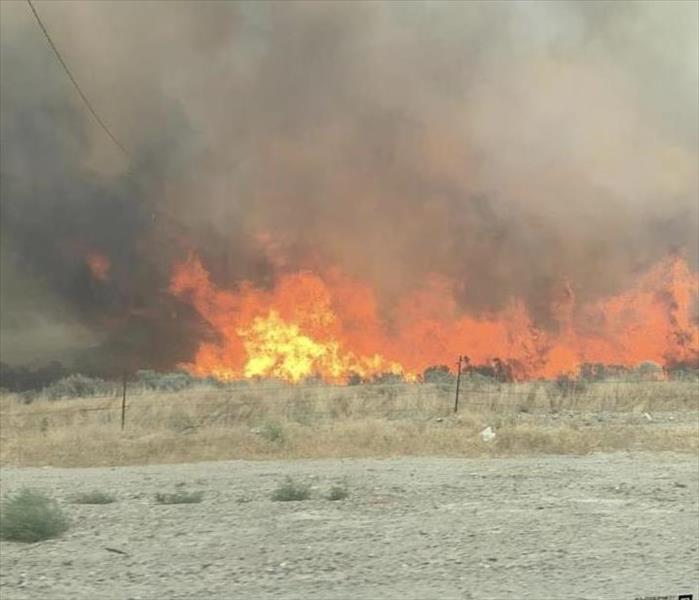 Be safe with these Utah wildfires.
Be safe with these Utah wildfires.
Are you one of the homes that are near these Utah wildfires? Does your home smell like smoke? How will you ever get rid of that smell? OZONING! What is ozoning and how does it work?
Normal oxygen (O2) is converted to O3, which is commonly called ozone. It reverts back to O2 in about an hour if the O3 is unused. This leaves the air fresh and clean because the source of the order has been permanently removed. And there are no artificial odors so the space becomes free of odors, as nature intended.
Outdoors, nature eliminates odors and microorganisms using UV light and O3. Indoors, most places receive very little UV light or O3 to help eliminate the odors. An ozone machine creates O3, or ozone, in a process that utilizes an electrical current. Ozone sanitizes the air by breaking down odors and microorganisms at their source.
Nature creates O3 as a natural cleaning during thunderstorms, and also from the sunlight striking the earth’s atmosphere. We have all taken a walk after a thunderstorm and experienced that fresh clean, fresh smell in the air. That’s O3, or ozone, at work.
SERVPRO also offers a service at our facility where we can ozone specific items like clothing, furniture, or anything that has smoke damage and get it smelling better than new.
Tips during a power outage in your Lehi home!!
4/28/2020 (Permalink)
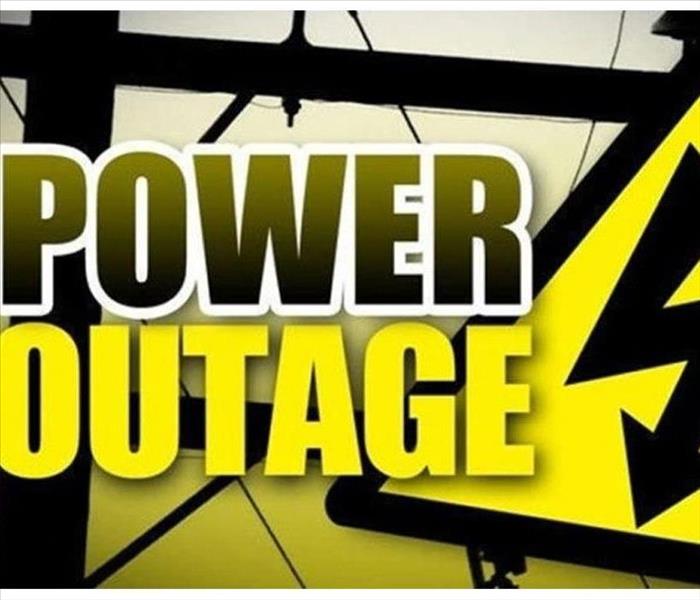 Don't let power outages stress you out, be prepared.
Don't let power outages stress you out, be prepared.
Power outages are incredibly common. Surprisingly, power outages are even getting worse in the USA. According to Inside Energy, the annual average of power outages doubles every five years! The reason for this has to do with aging infrastructure, more frequent storms, and problems sustaining the electric grid as populations grow.
Few people are prepared for them and even fewer people know what to do if the power goes out.
Steps to Take Immediately After the Power Goes Out
Step 1: Turn On Your Emergency Lights
Make sure your emergency lights are somewhere accessible in case you have to find them in the dark. Ideally, keep a flashlight in each room of your home.
In general, it is better to use battery-operated lights instead of candles because of the fire risk.
Step 2: See If Your Neighbors Have Power
If your neighbors still have electricity, then the problem is likely inside your home. Start by checking the main fuses or circuit breakers to see if they have blown.
Step 3: Check the Extent of the Problem
If your neighbors also don’t have electricity, you’ll want to see how wide-spread the problem is. You can do this by calling your power supplier. It might take a while to get through to them if a lot of people are trying to call.
You can also try calling friends who live nearby to see if they have power or not.
Step 4: Contact Family Members
During large power outages, stoplights and streetlights can go out too – making it unsafe to drive.
If your family members aren’t at home, get in contact with them. It might be best for them to remain at their current location until it is safer for them to come home.
Note that your family should have a contact plan in place.
Step 5: Unplug Appliances
When the power comes back on, it can cause a huge power spike which may damage electronics.
Hopefully all of your sensitive electronics are on surge protectors.
Even if they are, it is still smart to unplug all of your sensitive (expensive) electronics from the wall so they don’t get damaged when the power comes back on.
Step 6: See if Water is Safe to Drink
When the power goes out, water treatment centers might not work. You could still have clean-looking water coming from the tap, but it might not be safe to drink!
Call your local authorities to see if the water is safe to drink. Or, you can listen to your emergency radio to see if there is a “boil alert” in place.
**If you are unsure whether the water is safe to drink, always play it safe! Treat water before drinking it or use bottled water.
Step 7: Keep Fridge and Freezer Closed
According to Ready.gov, food kept in an unopened refrigerator will stay cold for about 4 hours.
A full freezer will keep its temperature for about 48 hours. You can learn more about this on their food safety page.
Step 8: Save Your Phone’s Battery
Turn off any power-consuming apps on your phone to save its battery. Do this even if you have a solar charger because you might not always be able to charge it.
Step 9: Stay Cool (Summer Power Outages)
If the power outage occurs during a heat wave and you have health conditions, then you might need to evacuate your home to a cooler location, such as a shopping mall or church.
Step 10: Stay Warm (Winter Power Outages)
If the power outage occurs during winter, now is the time to start using your emergency heating method. A wood stove is my personal favorite off-grid heating method.
Be cautious about using generators, camp stoves, or grills for heating as they can cause carbon monoxide poisoning.
You can get some passive solar heating during the daytime by keeping all curtains closed except those on south-facing windows. Close all drapes at night to trap some heat, and line windows and doorways with towels to prevent heat from escaping.
Rebuilding After Flood Damage in your Lehi Home.
4/7/2020 (Permalink)
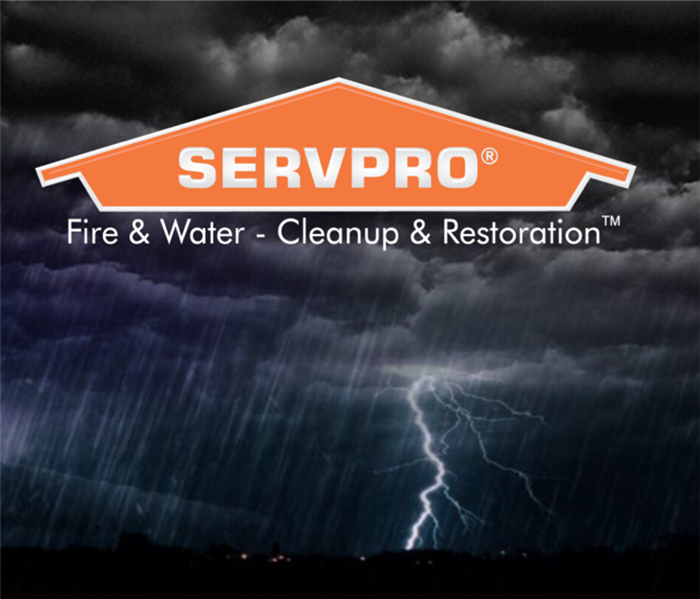 We at SERVPRO take pride in our work!
We at SERVPRO take pride in our work!
Disasters can cause significant damage and lingering effects within your Lehi home. With flooding that can be common to the area throughout certain times of the year, these disasters threaten your home with extensive water damage, but also the possibility of contamination and health hazards. Often flooding occurs from rising water levels, and this high volume of water can impact wastewater facilities and sewer systems on the path to your home, for example, which can cause health risks for those exposed to these contaminated floodwaters.
A risk assessment and inspection get performed on your flood damaged home initially when you contact our IICRC-certified restoration technicians. We utilize this information to determine the threats posed to the occupants of the house and our professionals on site, as well as getting a general idea of the structural concerns and irreparably damaged areas of the property that must get removed to proceed with the restoration process.
Rebuilding after a storm or flood in your home requires professionals with the knowledge both in structural integrity and reconstruction as well as technicians with the expertise to restore areas of your home without unnecessary demolition. This fine line between preserving and reconstructing is a determination made by both our experienced SERVPRO technicians on site and our contracting division responsible for the reconstruction and replacement of removed structural elements.
Areas of your home must get removed in these situations regardless when exposed to flood water that heavily soils and potentially contaminates areas of your home. Carpeting and drywall are often among the most frequently removed of these materials, and our SERVPRO contractors can quickly replace these removed elements once the area gets cleaned and dried thoroughly.
Flood damages in your home often lead to the removal of heavily damaged structural components and materials, but our SERVPRO of North Utah County professionals can help you quickly rebuild and restore the effects to your property. With our comprehensive approach, our team can offer mitigation, reconstruction, and restoration services to our customers to save time and money.
Are you prepared for an earthquake?
3/31/2020 (Permalink)
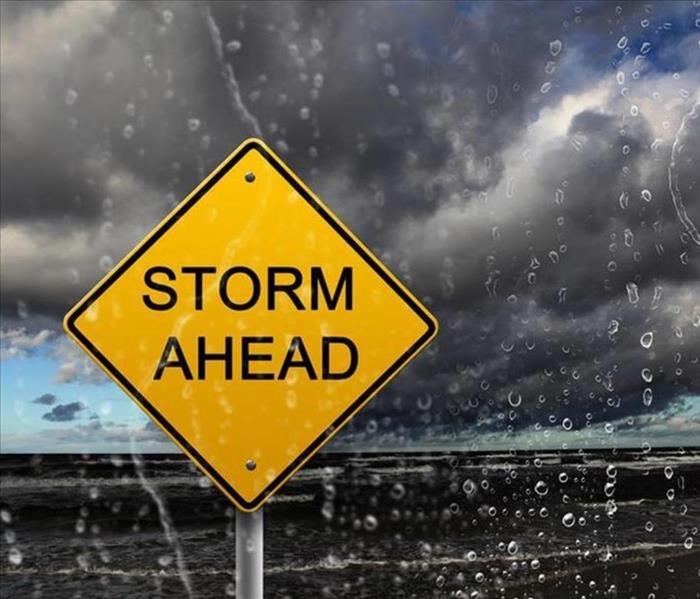 Storms are unpredictable. Be prepared
Storms are unpredictable. Be prepared
Living in Utah might have you wondering why we too should be ready for when storms come. Utah does not see many major storms throughout the year but storms should still be something we prepare ourselves for. With the latest earthquakes, we really should be making sure we are prepared.
When your home is hit by a flood or storm, or earthquake remember that your local SERVPRO is here to restore your home to its pre-storm condition. We specialize in restoring homes and buildings in a quick and timely manner so that you and your family could go back into your normal routine.
Do Storms In Utah Make You Nervous?
3/17/2020 (Permalink)
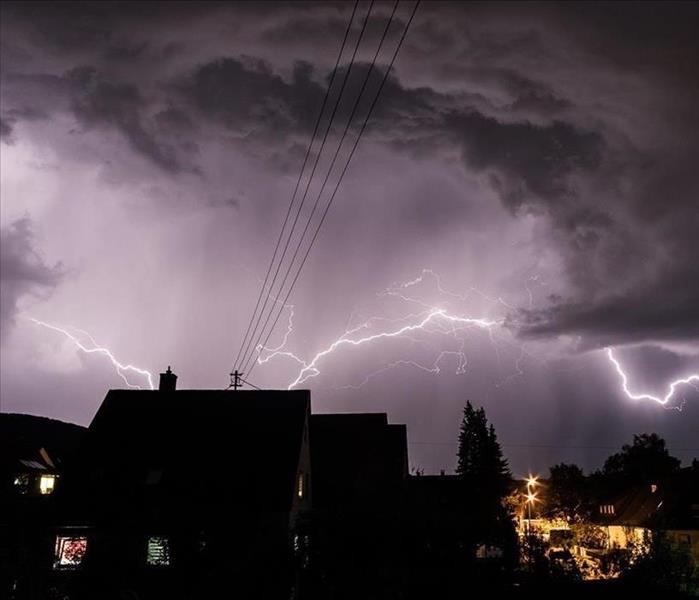 Choose SERVPRO for all your home damages!!
Choose SERVPRO for all your home damages!!
Utah Storms
Living in Utah might have you wondering why we too should be ready for when storms come. Utah does not see many major storms throughout the year but storms should still be something we prepare ourselves for.
Specifically during the rainy season, we must be extra careful. After our super dry, hot summers and how often we have wild fires, a lot of the time our mountains are left without the trees and bushes. We are left more vulnerable to landslides and flash floods from the rain we receive. Also after big winters and melt off can also cause flooding and water damage.
When your home is hit by a flood or storm, remember that your local SERVPRO is here to restore your home to its pre-storm condition. We specialize in restoring homes and buildings in a quick and timely manner, so that you and your family could go back in to your normal routine.
Did storm water wreak havoc in your Alpine home? Call SERVPRO today!!
2/26/2020 (Permalink)
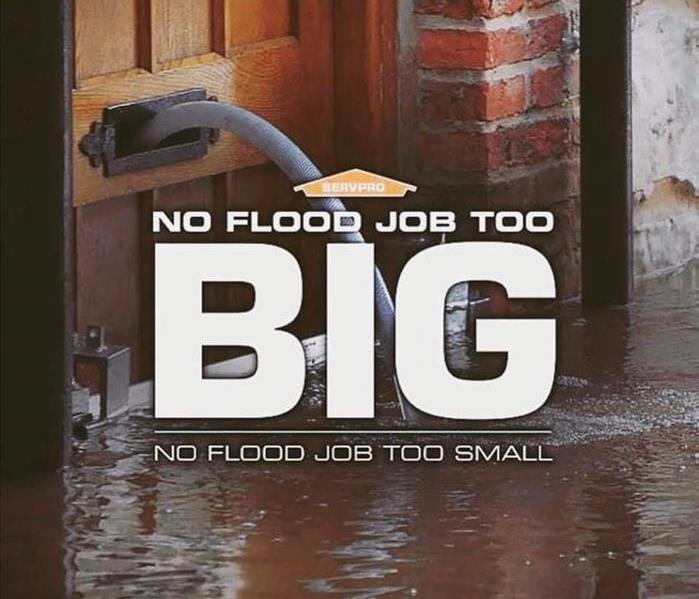 Don't let unwanted stormwater ruin your day!! Call SERVPRO Fast!!
Don't let unwanted stormwater ruin your day!! Call SERVPRO Fast!!
Storm Water
Alpine residents often have to deal with storms and other adverse weather that comes quickly out of the nearby mountains. The excess rainfall quickly turns into flood waters which can cost thousands of dollars in damage and loss.
Simply put, there is no one better prepared for a flood in Alpine than SERVPRO. As a member of a designated Large Loss Response Team, our restoration technicians have the equipment and training to deal with a water-related disaster of any size. These specialists that travel around the country are the same ones we send to clean and restore area homes.
No matter the amount of the flood water, our technicians start by reducing the health threat. Outside flooding contains soil, animal wastes, and other contaminants, so they spray the surface of the water and nearby property with a chemical agent to minimize any live bacteria.
Now, team members work to remove the flood water quickly. They start with commercial pumps that can clear most homes from several hours to several days, depending on the volume and situation. The pumps do not draw water out of carpets and from between floorboards, however. To finish the task, we utilize extraction wands. SERVPRO personnel has access to the standard wand extractor which is a commercial grade water vacuum, but these have adjustable speeds to control suction and a heater which can slowly dry wood floors or fibers as they draw out water.
Unlike wood floors, our teams cannot guarantee that carpets are safe to use after exposure to flood water. The only way to keep them from posing a further threat to a home is to remove and dispose of them.
Next, our teams clean every exposed surface. Using our extensive inventory of anti-bacterial and other cleaning agents, and equipment, technicians can restore much or the structural and personal property affected by a flood. If a personal item or piece of building material is not restorable, they dispose of it according to Utah and Federal regulations.
These are simply the first steps we take to return area homes to their pre-flood condition. If your home was affected by flooding, no matter how small the amount of water, contact SERVPRO of North Utah County at (801) 785-5228 today. We are here for you.
Information and More regarding Alpine by clicking
What to do to avoid frozen pipes during a winter storm in North Utah County!
2/6/2020 (Permalink)
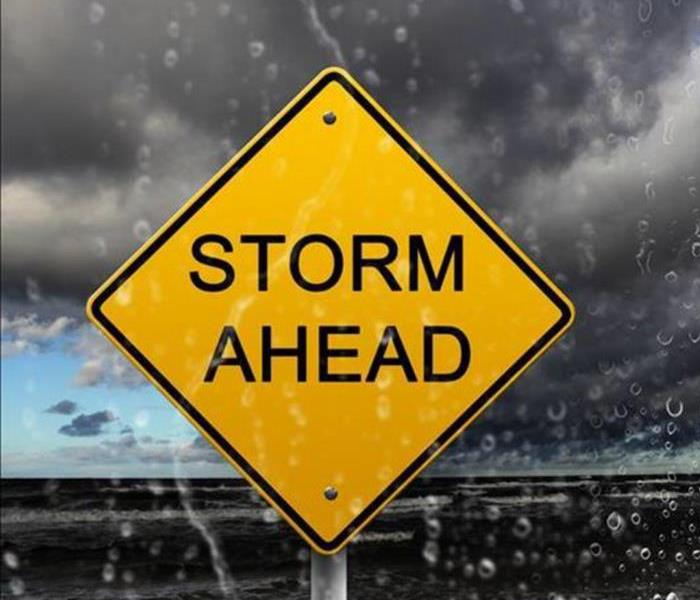 These tips can help your home during a winter storm!
These tips can help your home during a winter storm!
For those who leave their homes for extended periods of time during cold winter storms, it may be important to know what to do to prevent water pipes from freezing and bursting. Water in a pipe that freezes and ultimately bursts may result in a flooded home. This could create a horrible situation for a homeowner. While water damage repair professionals can be called to complete a water pipe repair due to a broken pipe, there are steps that a homeowner can take to prevent the situation from occurring in the first place. Here are three simple ways to help prevent frozen or bursting pipes.
1. Keep the Heat On
In cold climates, it may be very helpful to keep the heater turned on anytime that the house will be vacant. Keeping the heat turned to at least 50 degrees Fahrenheit may help to prevent pipes from freezing. Also opening cabinet doors underneath sinks and where pipes are located may help air to circulate around pipes and keep them warm.
- Turn Water in the Home Off or Allow Faucets to Drip
A homeowner may choose to turn the water to the home off entirely. However, if water is to remain on while the family is out of town, keeping faucets open a little bit may prevent a broken pipe. Water expands when it freezes. Therefore, faucets that drip can help prevent the freezing of stationary water and relieve pressure inside the pipes, avoiding the need for a water pipe repair due to a rupture.
Prepare Your Car For Winter Storms!
1/28/2020 (Permalink)
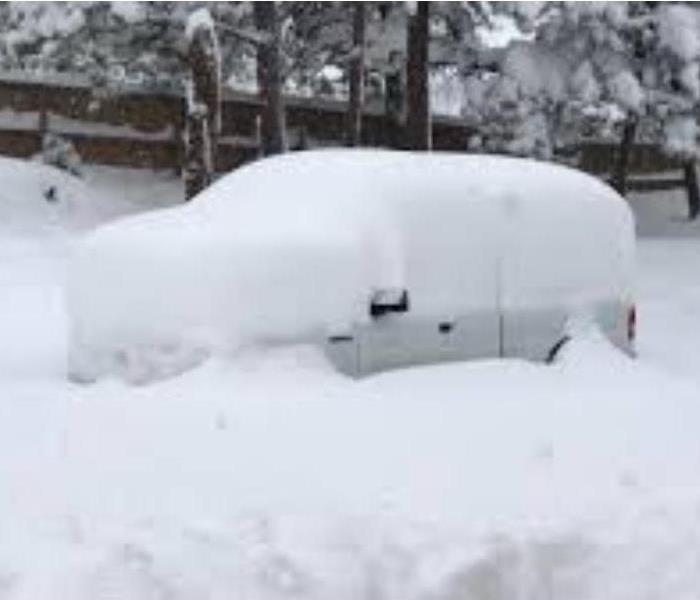 Be prepared this winter season!!
Be prepared this winter season!!
We have all been there, its cold and snowing and you are having car problems. Follow these tips to help prepare yourself and your car for a winter storm.
- Start to prepare your car before Thanksgiving if possible. It's easy to do it before it gets cold and snowy. Better too soon than too late.
- Check the tire pressure at least once a month through the winter. As it gets colder outside the air molecules get smaller and tire pressure goes down. Low tire pressure will make your car under preform. You can find the suggested PSI (pounds per square inch) on your tires or on inside the driver’s side door jam.
- Have your battery tested. Nothing is worse than a dead battery when you’re freezing, not home or late for work. Also make sure you have jumper cables in case you or someone you come across need them.
- Check your windshield for cracks and make sure you have good windshield wipers. The cold can make your windshield crack and obstruct your vision. Bad wipers can cause all sorts of problems and are an easy fix.
- Inspect your headlights and brake lights. If it’s storming or dark your car can become very hard to see and cause an accident.
- Make sure you have warm clothes, proper winter shoes, and a blanket in your car in case you get stuck in traffic or your car breaks down. This could save your life.
- Lastly, ALWAYS make sure you have a couple water bottles in your car somewhere. No matter the time of year this could save your life or someone else's.
Follow these tips and you will be prepared for those winter storms that are bound to hit.
Storms Can Hit Fast! Tips To Be Prepared!
1/21/2020 (Permalink)
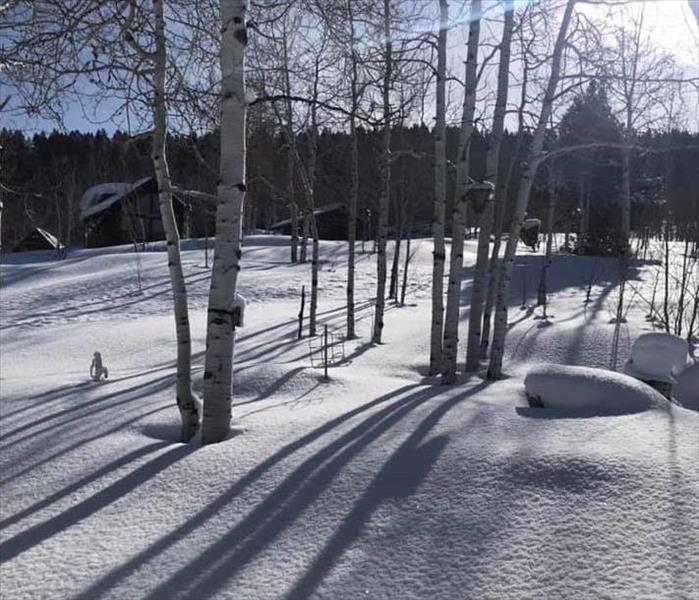 Being Prepared can save so much mess and heartache
Being Prepared can save so much mess and heartache
It's that time of the year again; time to prepare ourselves and homes for the brutal cold of winter storms. It is not something anyone looks forward to but it is best to be prepared.
Follow these tips recommended by www.ready.gov/winter-weather to prepare yourself and your home for winter.
Before Snowstorms and Extreme Cold
- Make a family communication plan. Your family may not be together when disaster strikes, so it is important to know how you will contact one another, how you will get back together and what you will do in case of an emergency.
- Make an emergency kit for at least three days of self-sufficiency.
- Keep space heater safety in mind: Use electric space heaters with automatic shut-off switches and non-glowing elements. Remember to keep all heat sources at least three feet away from furniture and drapes.
Prepare Your Home
- Make sure your home is well insulated and that you have weather stripping around your doors and window sills to keep the warm air inside.
- Make sure you have a working carbon monoxide detector.
- Keep fire extinguishers on hand, and make sure everyone in your house knows how to use them. House fires pose an additional risk, as more people turn to alternate heating sources without taking the necessary safety precautions.
- Learn how to shut off water valves (in case a pipe bursts).
- Insulate your home by installing storm windows or covering windows with plastic from the inside to keep cold air out.
- If you have a wood-burning fireplace, consider storing wood to keep you warm if winter weather knocks out your heat. Also, make sure you have your chimney cleaned and inspected every year.
- Have at least one of the following heat sources in case the power goes out:
- Extra blankets, sleeping bags, and warm winter coats
- Fireplace or wood-burning stove with plenty of dry firewood, or a gas log fireplace
- Make sure you have a cell phone with an emergency charging option (car, solar, hand crank, etc.) in case of a power failure.
- Plan to bring pets inside.
- Know where the manual release lever of your electric garage door opener is located and how to operate it in case you lose power.
Follow these recommended tips and you will be prepared for those cold winters’ days.
Spring Snow Melt Can Cause Flooding in Your Alpine Home
4/4/2019 (Permalink)
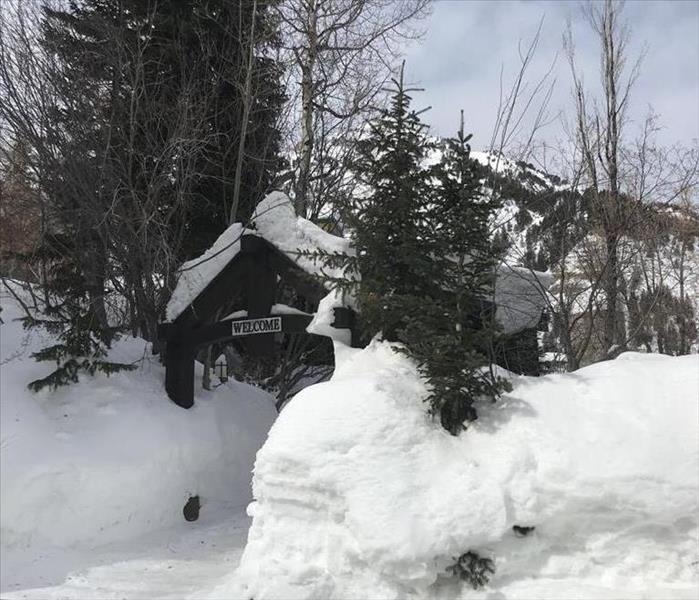 Did Snow Melt Cause a Flood in Your Home?
Did Snow Melt Cause a Flood in Your Home?
Snow Melt Causes Flooding
Spring is definitely in the air. More and more people start heading outside to soak in the sunshine after a long, cold, snow packed winter. As temperatures rise snow is melting into Utah's rivers and streams, increasing the risk of flooding. Hopefully it comes in an orderly fashion, but if it warms up too quickly the snow will overwhelm Utah's rivers and mountains causing concern for many homes.
Follow these tips to help prevent flooding in your home.
- Check for leaks around your doors and windows. Especially basement windows in window wells.
- Keep window wells free from debris
- If you have flood drains make sure they are clear and working
- Check the grading around your home and make changes in grading to encourage flooding away from your home
- Inspect and repair your foundation for cracks before its too late
If you unfortunate and do have water and/or mold damage from flooding in your home call SERVPRO today. Our trained experts are ready for your call.
Call SERVPRO today at 801-785-5228
Hail Damage to Your Alpine Fork Roof?
3/19/2019 (Permalink)
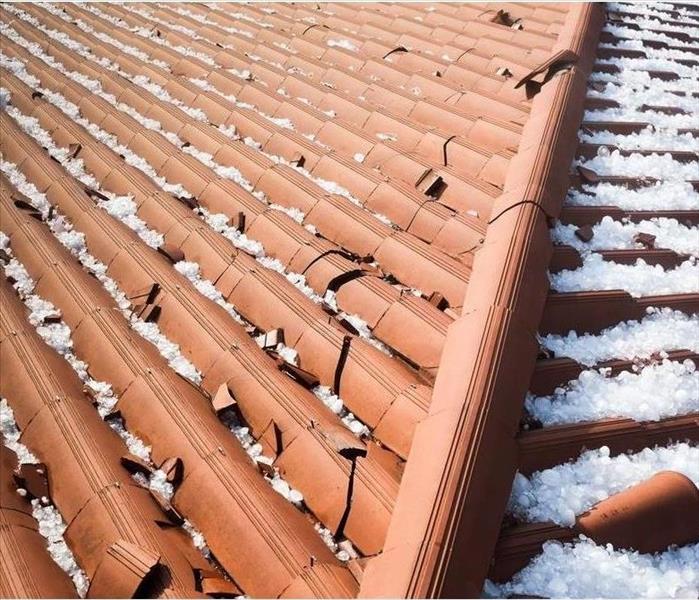 If you have damage to your roof that has resulted in water damage to your home call SERVPRO today!
If you have damage to your roof that has resulted in water damage to your home call SERVPRO today!
In 2016, the United States experienced 5,601 severe hail storms, as documented by the NOAA Severe Weather Database. Hail can range in size from the size of pencil tip to the size of a softball.
Many homeowners are not aware of hail damage on their roofs. Hail damage to roof tops often times cannot be seen from the ground, and that’s a big reason why the idea of hail damage hardly ever crosses a homeowner’s mind.
Tell-Tale Signs of Hail Damage on a Roof
Although you cannot fully determine the amount of hail damage on a roof from the ground, there are some signs that a trained eye can point out and help determine if there may be more damage up top. Here are a few things to look for.
- Dented gutters, gutter screens, or downspouts
- Damage to siding and windowsills/casings
- Damage to air conditioners or other outdoor items
- Damage to decks or painted wood surfaces
Once you are on the roof check for these signs of roof damage:
- Dented vents, chimneys, or sky light covers
- Dented or damages shingles. (This may be the most important to check for.)
Dented or damages shingles are what leads to a damages and potentially leaky roof. Some day you will never get a solid insurance claim without shingle damage.
What to do if you have Shingle Damage
Hail damage is covered by standard home insurance in most states but coverage is applied in a variety of ways, depending on where you live, your insurer and how your policy is set up. The best way to find out about your coverage is to reach out to your insurance provider before the damage occurs.
If you have a damaged roof due to hail that has caused a leaky roof call SERVPRO of North Utah County, today to help mitigate water damage in your home.
Call US Today!
SERVPRO of North Utah County (801) 785-5228
Has Snow Melt Damaged Your Home?
2/28/2019 (Permalink)
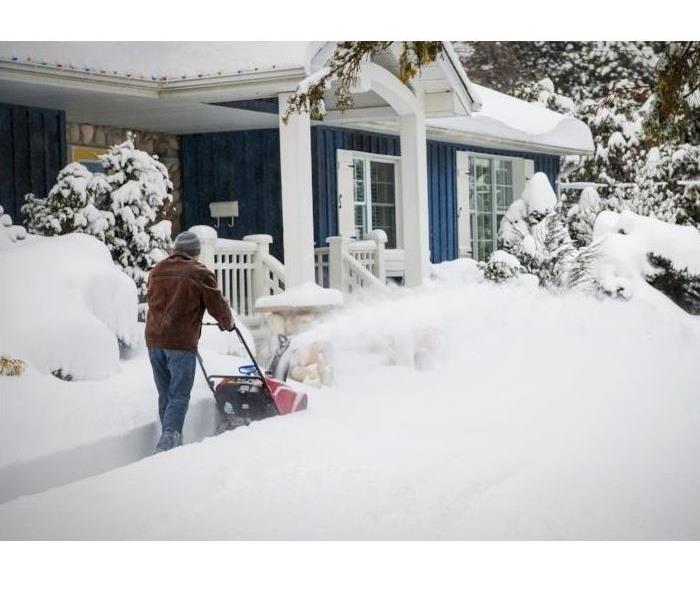 Snow Melt Flooded Your Home?
Snow Melt Flooded Your Home?
It’s a glorious time of the season when the weather starts to change from snow to sunshine and the temperature starts to rise. But if you have snow accumulation around the edges of your home it may not be time to celebrate. This is the time of the year when we start to receive calls from people who have water in their basements and they aren’t sure where it is coming from. You’ve checked and found no visible evidence of a leaky pipe or appliance malfunction and may be scratching your head in frustration. If this is the case you might have water damage from recent snow melt. Melting snow around the perimeter of the house can saturate deep into the soil and leak through the foundation and basement walls. Or if you have leaky roof that melting snow is coming right through your ceiling.
You now realize you have a problem but what do you do now? Call SERVPRO of North Utah County and we will send one of our trained technicians to save the day! Using advanced extraction techniques, our technicians have the expertise, training, and certificates to help clear away water and mitigate loss. We use scientific drying principles and provide validation and documentation that your property is dry and the job is complete. We also utilize professional-strength cleaning, sanitizing and deodorizing products to clean and sanitize the affected water damage area for your comfort and safety.
Follow these tips to prevent water damage to you home as the snow starts to melt.
- Remove the snow from around your home: You probably always shovel your porch and sidewalks but have you thought about the snow surrounding the edges of your house.
- Check your roof and gutters: Before the first snow hits inspect your roof and gutters for any damage. Also, be sure you’re your gutters are clear so the snow melt has a clear pathway off your roof.
- Clear snow from drainage areas: storm drains and catch basins can often get clogged with snow and debris. If you can do it safely, clearing snow from these areas can help keep water way from your home.
- Rearrange your storage: In case water does get into your basement be sure to keep valuable, chemicals, or anything else you’d like to keep dry off the floor; or in water proof plastic bins instead of cardboard boxes.
- Check your appliances: clear out space around your water heater, furnace, and other appliances. If possible, raising your washer and dryer off the floor could protect from water damage.
- Don’t try too much: getting on the roof at anytime of the year can be risky, even more so if snow is involved. Clearing your roof and gutters is important to prevent water damage, but be sure to use a professional to handle any dangerous situations.
Here is a Method That is Helping With Pleasant Grove Flood Damage Remediation
1/30/2019 (Permalink)
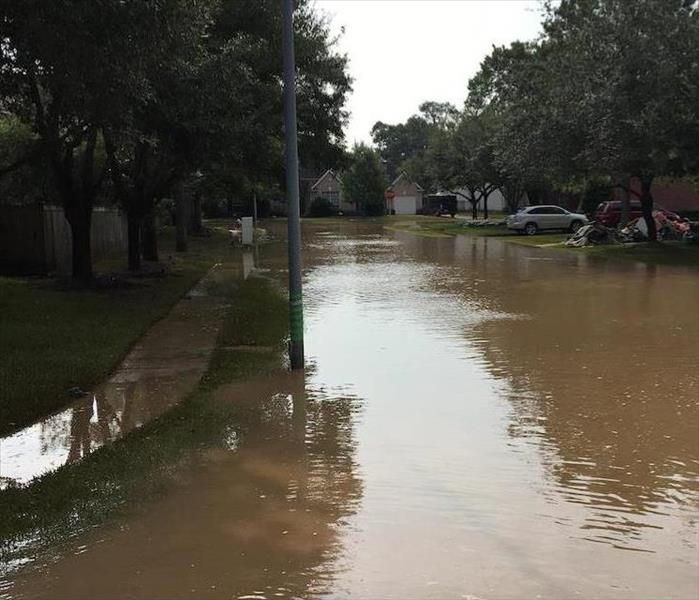 Sometimes flooding is inescapable, especially during a big storm. Stay calm and contact SERVPRO after you and your family are safe.
Sometimes flooding is inescapable, especially during a big storm. Stay calm and contact SERVPRO after you and your family are safe.
How We Carry Out Flood Removal in Pleasant Grove Residences
Heavy rainfall is one of the main causes of road overflow and flash flooding. The property damages caused by flash flooding is often widespread and can fill the ground floor of your home in minutes. In an emergency, you can always reach out to our rapid response unit to arrange an immediate call out to your property guaranteed to arrive within four hours of notification of loss.
Water migrates fast, so flood removal in Pleasant Grove should be carried out by professionals with experience in dealing with this type of damage. The water you can see is only half the story, it quickly moves into wall cavities, under the subfloor, and beneath permanent fittings. SERVPRO equips our technicians with moisture meters to ensure they can find hidden pockets and remove them.
Quick service is essential. Clean standing water can quickly become contaminated and turn to grey or black water resulting in more severe and sometimes permanent damages. Our technicians are trained to safely remove and check for potential hazards in a flooded property before bringing in equipment. Once the affected area is safe to work in, we can rapidly remove water using pumps.
Once standing water is removed from all areas, including wall cavities and inside fittings, we can bring in portable extractors to help dry your properties — these equipment help to remove saturated moisture through a combination of heating elements and vacuum power. Materials are significantly weaker when wet, so the lighter approach afforded by extraction instruments helps to reduce the likelihood of large scale replacement.
Flood water is likely to contain bacterias and other contaminated materials. The safe removal and sanitization of the affected area is an essential part of service. SERVPRO can also use industrial foggers to help tackle unpleasant odors left behind. In private residences, we can use water-based odor removers to ensure you can return to the property as quickly as possible.
Find a quick solution by contacting SERVPRO of North Utah County at (801) 615-2527.
Click here for more about Pleasant Grove.
Unwanted Stormwater in Your Provo Property?? Call SERVPRO Fast
1/1/2019 (Permalink)
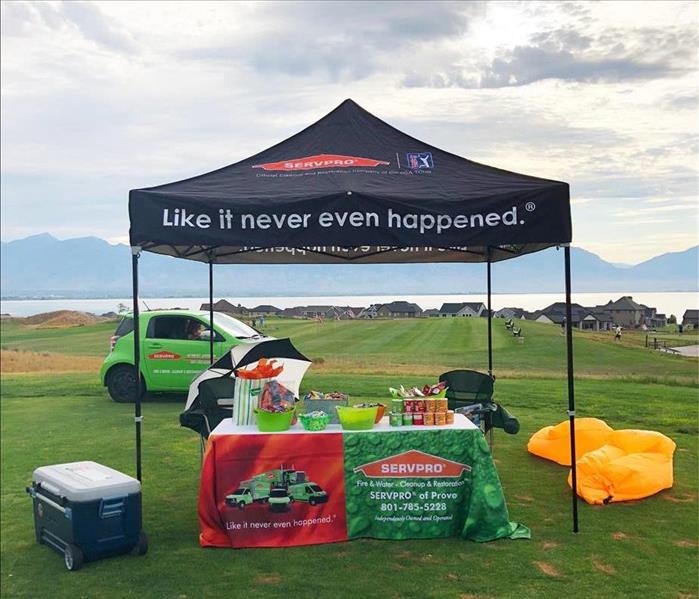 Call SERVPRO for Floodwater Removal and Cleanup in Provo--"Like it never even happened."
Call SERVPRO for Floodwater Removal and Cleanup in Provo--"Like it never even happened."
Restoring Provo Homes After A Flood
Provo residents often have to deal with storms and other adverse weather that comes quickly out of the nearby mountains. The excess rainfall quickly turns into flood waters which can cost thousands of dollars in damage and loss.
Simply put, there is no one better prepared for a flood in Provo than SERVPRO. As a member of a designated Large Loss Response Team, our restoration technicians have the equipment and training to deal with a water-related disaster of any size. These specialists that travel around the country are the same ones we send to clean and restore area homes.
No matter the amount of the flood water, our technicians start by reducing the health threat. Outside flooding contains soil, animal wastes, and other contaminants, so they spray the surface of the water and nearby property with a chemical agent to minimize any live bacteria.
Now, team members work to remove the flood water quickly. They start with commercial pumps that can clear most homes from several hours to several days, depending on the volume and situation. The pumps do not draw water out of carpets and from between floorboards, however. To finish the task, we utilize extraction wands. SERVPRO personnel has access to the standard wand extractor which is a commercial grade water vacuum, but these have adjustable speeds to control suction and a heater which can slowly dry wood floors or fibers as they draw out water.
Unlike wood floors, our teams cannot guarantee that carpets are safe to use after exposure to flood water. The only way to keep them from posing a further threat to a home is to remove and dispose of them.
Next, our teams clean every exposed surface. Using our extensive inventory of anti-bacterial and other cleaning agents, and equipment, technicians can restore much or the structural and personal property affected by a flood. If a personal item or piece of building material is not restorable, they dispose of it according to Utah and Federal regulations.
These are simply the first steps we take to return area homes to their pre-flood condition. If your home was affected by flooding, no matter how small the amount of water, contact SERVPRO of North Utah County at (801) 785-5228 today. We are here for you.
Information and More regarding Provo by clicking.
Let Our Team At SERVPRO Restore Your Home In Pleasant Grove After A Flood
12/26/2018 (Permalink)
 Get in touch with us at (801) 785-5228 so we can assist you in getting your home back to pre-damage condition.
Get in touch with us at (801) 785-5228 so we can assist you in getting your home back to pre-damage condition.
Flood Damage Cleanup In Your Pleasant Grove Home
When your home in Pleasant Grove has been damaged from flooding from severe storms, you need the help of a professional restoration company to get your property to its preloss state again. A flooded basement or other damage which exists after a flood or storm can lead to severe damage to your property.
You need immediate flood damage mitigation for your Pleasant Grove home to protect the structure and your possessions inside. Without fast and efficient water removal, additional damage can occur. That is why at SERVPRO we do not waste any time getting to you when you reach out to us for help.
After we have extracted any standing water, we need to dry your structure by removing moisture from the air. SERVPRO techs use two different systems for drying. An open drying system exchanges moist air from inside your structure with the drier outside air. Opening windows and using fans or air movers helps to exchange the air and ventilate your home.
For the best drying conditions, the outside air should have a high temperature and low relative humidity. The difference between the specific humidity of the inside air and outside air is also essential. Before we use an open system, we take measurements to figure out specific humidity for both outside and inside air.
A closed drying system closes off the area affected from the outside air and from areas in your home that are unaffected. We use dehumidification equipment to dehumidify the air inside the home. For a closed system to work, we have to control the indoor environment using dehumidifiers and air movers. It is easier to dry areas which are smaller, so we create a drying chamber by hanging plastic sheeting around affected areas or closing windows and doors. The relative humidity in this drying chamber shouldn’t go higher than 40% RH for the proper drying of porous materials. Air condition can also be used to help dehumidify. If we set up a drying chamber, we can dry items more thoroughly and more quickly.
SERVPRO of North Utah County works to thoroughly dry your home in Draper, Lindon, or Alpine after a flood damage emergency. Get in touch with us at (801) 785-5228 so we can assist you in getting your home back to pre-damage condition.
Click here for more about Pleasant Grove.
Our Experts Can Restore Your Provo Roof After A Heavy Snowfall
11/19/2018 (Permalink)
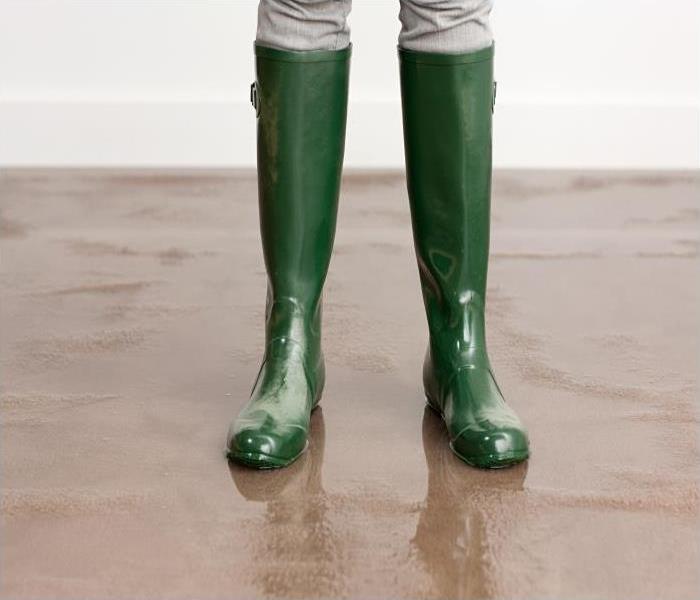 Recovering from a flood is nothing that a homeowner should have to do alone.
Recovering from a flood is nothing that a homeowner should have to do alone.
Heavy Snowfall Can Damage Your Provo Roof
With the colder months of the season beginning to set in, Provo residents prepare for what could always potentially be a difficult winter. Heavier snowfalls threaten homes, especially when several days of hard snows compact onto roofs throughout the area without temperatures rising enough to melt or getting cold enough to freeze. Either of these scenarios presents a weight issue for your roof, which can expose vulnerable points to allow moisture penetration and eventual water flow into the property.
Your Provo home could experience flood damage if your roof is compromised. When water begins to find a path inside of your house through the attic space, the flow of melting snow from this opening in your insulation could be substantial depending on the amount of snow still trapped on top of the house. This water damage can spread quickly through the attic space and begin to affect the floors below.
Our SERVPRO team can respond quickly at the first sign of flooding in your home. We have the advanced equipment and the experience to help mitigate your loss while we establish what is necessary to overcome the effects throughout the property and return a restored home to you. This initial assessment can also help to provide your insurance provider with the necessary documentation and evidence of the damages to speed up the process of claim approval to afford the restoration work required.
With flooding in your home, the first step is boarding up the damaged area of the roof to prevent further penetration until reconstruction efforts can occur. Depending on the damages, these rebuilding efforts must happen before restoration work can begin. Our SERVPRO franchise offers build back services to provide a comprehensive package for our customers with reputable licensed contractors.
Recovering from a flood is nothing that a homeowner should have to do alone. You can depend on our SERVPRO of North Utah County rapid response team to help mitigate the loss and provide our expertise into every step towards restoring your water-damaged home fully. Give SERVPRO a call today at (801) 785-5228.
Click here for more about Provo.
When Your House is Built Upon Sandbags During a Flood in Pleasant Grove
10/24/2018 (Permalink)
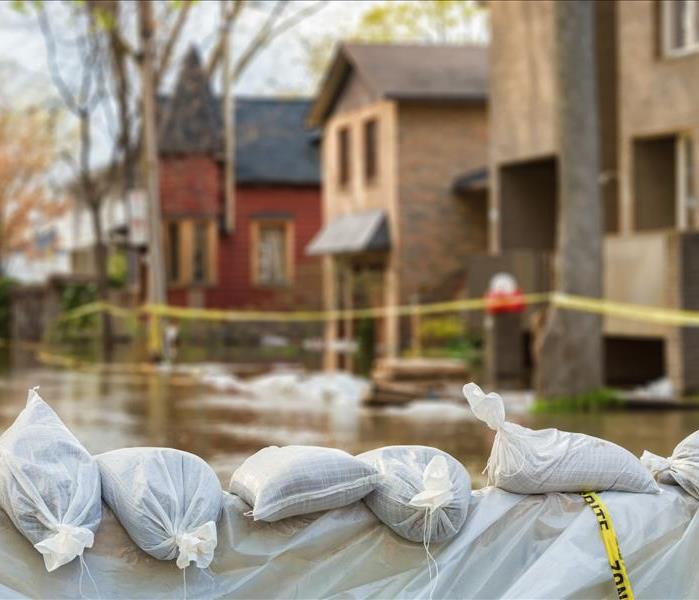 Sandbags can be a first line of defense with a flood, but more often than not they fail. SERVPRO can help dry out and restore your home.
Sandbags can be a first line of defense with a flood, but more often than not they fail. SERVPRO can help dry out and restore your home.
Flood Damage Mitigation in Pleasant Grove Reassures Homeowners and Protects Property
Flooding can happen at any time, and little can be done to stop the flow of dirty water. Sandbagging in Pleasant Grove can help divert this from happening only if the sandbags' height reaches high enough. Putting this together requires a great many resources and extensive labor. The smallest gap can permit flooding to occur in otherwise protected areas.
Residents who work together can often help prevent flood damage to their Pleasant Grove neighborhood, but more often, this does not happen. SERVPRO is always ready to help our communities with a rapid response time when residential areas sustain damage. Our professional team can mitigate the damaged areas and get your home back to normal, “Like it never even happened.”
Because flooring takes the most damage in floods, most replacements occur here. We need to pull up carpeting and padding, as well as other flooring types to make way for machinery that dries everything out underneath and to get things ready for the installation of new flooring. If your home is built on a floodplain, we can explain different flooring types that sustain less permanent damage in such situations. While their initial cost might be a bit higher, in the long run, the investment could prove worthwhile.
Walls made of drywall and other semi-porous materials like wood and plaster can disintegrate rather quickly once saturated. Flooding does more than soak a wall's lower portion. It also puts pressure on it and can cause immediate warping. Not only is the water on the exterior of the wall but it also enters through corner seams and anywhere else it can and then affects the interior of the wall. We remove saturated areas as neatly as possible. Once removed, we can check for other damage, including mold that may have already started to multiply. Quickly drying these areas out helps keep warping of structural wooden beams to a minimum.
After flooding, a home often experiences the development of bad odors. We use hydroxyl generators to eliminate these smells. Hydroxyl generators work by pulling a hydrogen atom away from the water molecules' structures. This free hydrogen atom then bonds to organic materials including bacteria and viruses, making them too heavy to enter the air, eliminating the odors they cause. Hydroxyl is also very useful for odors produced by the VOCs from fresh paint and new carpet.
SERVPRO of North Utah County works throughout Draper, Highland, and Eagle Mountain, assisting families in getting their lives back to normal by ridding their homes of flood damage and its effects. Call us at (801) 785-5228, so we can help you, also.
Pleasant Grove was once called Battle Creek. Click here for more fun facts about Pleasant Grove.
Risk Of Contamination When Flooding Damages Your Lehi Home
8/2/2018 (Permalink)
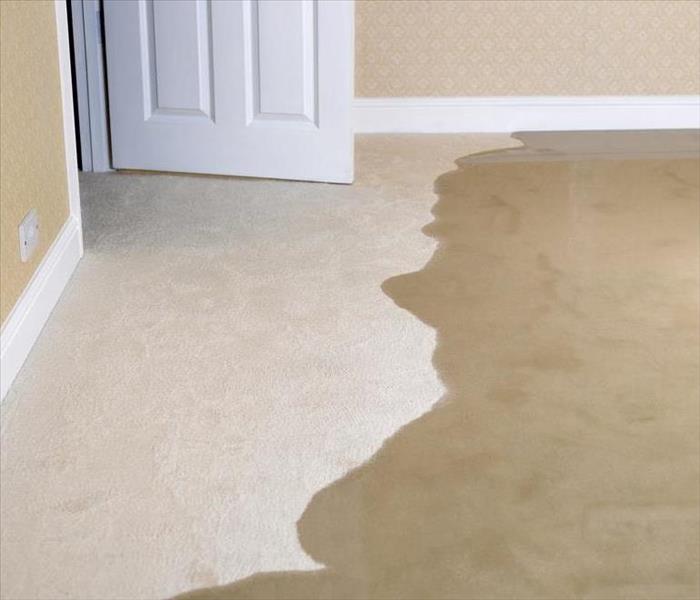 Flooding in a basement or the lowest level of your home can expose you and your family to hazardous substances.
Flooding in a basement or the lowest level of your home can expose you and your family to hazardous substances.
Flood Damage To Your Home
Whether your Lehi home suffers damage from a sewage backup or overland flooding, dealing with quantities of water in your lower levels presents issues beyond the abilities of most homeowners to manage without professional help. Flooding in a basement or the lowest level of your home can expose you and your family to hazardous substances. Our trained and experienced technicians have the certifications and skills to remediate the circumstances.
Municipal water supply and drainage systems connected to your Lehi home can cause flooding when pipes break or sewers clog. Extreme weather patterns nearby and at higher elevations can send flash flooding across roadways and the grounds surrounding your house. Attempts to remediate this influx of water with non-commercial consumer tools like shop vacs, mops and buckets risks contact with harmful and sometimes lethal substances without proper personal protective equipment. Licensed instructors must teach protocols designed by the EPA, OSHA, and local health authorities to keep people safe and sanitize structures and belongings and employed by professionals.
SERVPRO trains our crews to restoration industry standards established by the Institute of Inspection Cleaning and Restoration Certification (IICRC). When we arrive to assess your flooded home, our crew chiefs determined the category of water involved, from clean to slightly tainted (gray), or severely contaminated (black).
Gray water contains dirt or chemicals that must be removed from structures and contents prior to drying. They can irritate susceptible individuals or accelerate deterioration of property. Black water is the norm when your home suffers a sewer back up. Human and animal waste enters your property, accessible and threatening to soil personal possessions and building materials. Blood and waste-borne pathogens cause illness and possibly death. SERVPRO crew members are familiar with local codes pertaining to the need to contain contaminated water and the proper and legal methods to dispose of it.
SERVPRO employees use pumps and high-efficiency water extractors to remove the flood water, and then treat the affected areas with EPA-registered antimicrobials to inhibit the lingering effects of any contaminants. We then dry the flooded spaces completely, necessary to restore the integrity of your home’s structure and prevent possible secondary damage such as mold growth.
When water floods your home, SERVPRO of North Utah County has the trained technicians and specialized equipment to transform the destructions back to preloss condition. Call us at (801) 785-5228 to set up an assessment and plan to make it "Like it never even happened.”
Click here for more about Lehi.
Should You Be Worried About Storms?
6/5/2018 (Permalink)
Living in Utah might have you wondering why we too should be ready for when storms come. Utah does not see many major storms throughout the year but storms should still be something we prepare ourselves for.
Specifically during the rainy season, we must be extra careful. After our super dry, hot summers and how often we have wild fires, a lot of the time our mountains are left without the trees and bushes. We are left more vulnerable to landslides and flash floods from the rain we receive.
When your home is hit by a flood or storm, remember that your local SERVPRO is here to restore your home to its pre-storm condition. We specialize in restoring homes and buildings in a quick and timely manner, so that you and your family could go back in to your normal routine.
Call SERVPRO at 801-785-5228
Snow Covered Roof, Majestic or Dangerous?
1/25/2018 (Permalink)
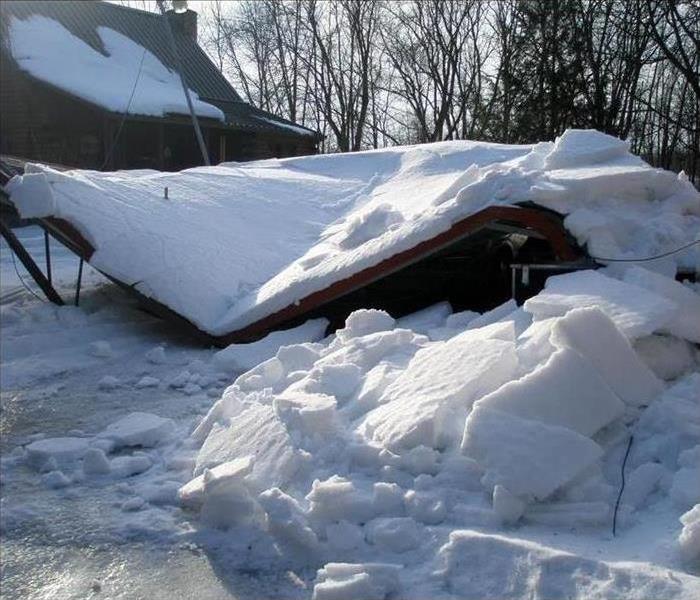 It's not so beautiful anymore...
It's not so beautiful anymore...
Did you know one square foot of compacted snow can weigh close to 50 pounds?!! Think about how much weight is sitting on your roof. Many roofs, especially, older, flat, or structures such as carports, garages, and sheds are not always rated to support this kind of weight. It is important to remove as much of it as you can safely from the ground.
** We advise you review your insurance policy and check with your agent before you have a problem. Basic insurance policies do not cover collapse of a structure due the weight of snow or ice.
Check out this article from Travelers about safely removing snow from your roof before it is too late.
https://www.travelers.com/resources/weather/winter-storms/roof-snow-removal-tips.aspx?cm_mmc=TWITTER-_-190-_-768968169-_-20170110&linkId=33184720
12 Things to Do During a Power Outage
1/11/2018 (Permalink)
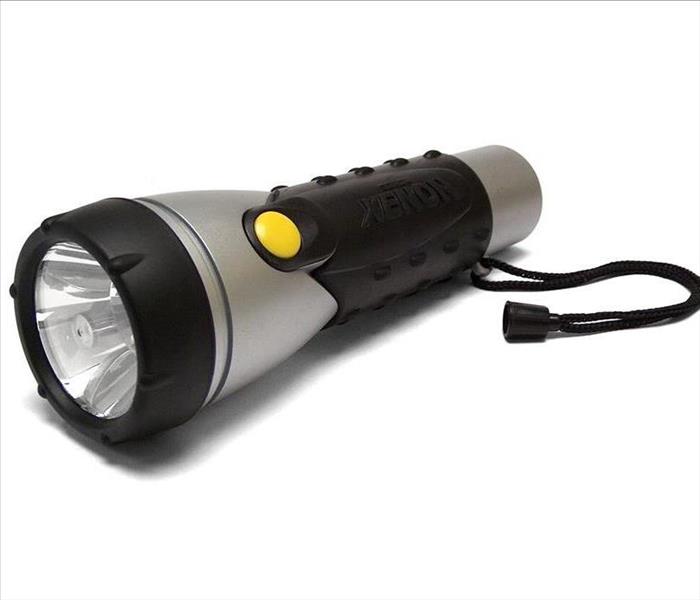 Prepare Now, Before You're Left in the Dark
Prepare Now, Before You're Left in the Dark
Surprisingly, power outages are even getting worse in the USA. According to Inside Energy, the annual average of power outages doubles every five years! The reason for this has to do with aging infrastructure, more frequent storms, and problems sustaining the electric grid as populations grow.
Despite how common power outages are, few people are prepared for them and even fewer people know what to do if the power goes out.
Steps to Take Immediately After the Power Goes Out
Step 1: Turn On Your Emergency Lights
Make sure your emergency lights are somewhere accessible in case you have to find them in the dark. Ideally, keep a flashlight in each room of your home.
In general, it is better to use battery-operated lights instead of candles because of the fire risk.
Step 2: See If Your Neighbors Have Power
If your neighbors still have electricity, then the problem is likely inside your home. Start by checking the main fuses or circuit breakers to see if they have blown.
Step 3: Check the Extent of the Problem
If your neighbors also don’t have electricity, you’ll want to see how wide-spread the problem is. You can do this by calling your power supplier. It might take a while to get through to them if a lot of people are trying to call.
You can also try calling friends who live nearby to see if they have power or not.
Step 4: Contact Family Members
During large power outages, stoplights and streetlights can go out too – making it unsafe to drive.
If your family members aren’t at home, get in contact with them. It might be best for them to remain at their current location until it is safer for them to come home.
Note that your family should have a contact plan in place.
Step 5: Unplug Appliances
When the power comes back on, it can cause a huge power spike which may damage electronics.
Hopefully all of your sensitive electronics are on surge protectors.
Even if they are, it is still smart to unplug all of your sensitive (expensive) electronics from the wall so they don’t get damaged when the power comes back on.
Step 6: See if Water is Safe to Drink
When the power goes out, water treatment centers might not work. You could still have clean-looking water coming from the tap, but it might not be safe to drink!
Call your local authorities to see if the water is safe to drink. Or, you can listen to your emergency radio to see if there is a “boil alert” in place.
**If you are unsure whether the water is safe to drink, always play it safe! Treat water before drinking it or use bottled water.
Step 7: Keep Fridge and Freezer Closed
According to Ready.gov, food kept in an unopened refrigerator will stay cold for about 4 hours.
A full freezer will keep its temperature for about 48 hours. You can learn more about this on their food safety page.
Step 8: Save Your Phone’s Battery
Turn off any power-consuming apps on your phone to save its battery. Do this even if you have a solar charger because you might not always be able to charge it.
Step 9: Stay Cool (Summer Power Outages)
If the power outage occurs during a heat wave and you have health conditions, then you might need to evacuate your home to a cooler location, such as a shopping mall or church.
Step 10: Stay Warm (Winter Power Outages)
If the power outage occurs during winter, now is the time to start using your emergency heating method. A wood stove is my personal favorite off-grid heating method.
Be cautious about using generators, camp stoves, or grills for heating as they can cause carbon monoxide poisoning.
You can get some passive solar heating during the daytime by keeping all curtains closed except those on south-facing windows. Close all drapes at night to trap some heat, and line windows and doorways with towels to prevent heat from escaping.
Step 11: Prevent Pipes from Freezing (Winter Power Outages)
Hopefully your pipes are well insulated so they don’t freeze. The easiest way to prevent pipes from freezing during power outages is to let a small stream of water flow through the faucets.
For long-term power outages during extreme weather, you’ll want to drain your hot water heater. You will also need to winterize the drainage system by putting antifreeze into the drain traps below toilets, sinks, washing machines, etc.
12. Stay Sane!
Play games, make shadow puppets, hang out with the neighbors in the dark… You might even enjoy the power outage and the digital detox it gives you!
https://www.primalsurvivor.net/steps-after-power-outage/
How to Prepare Your Car for a Winter and Snow Storms
12/14/2017 (Permalink)
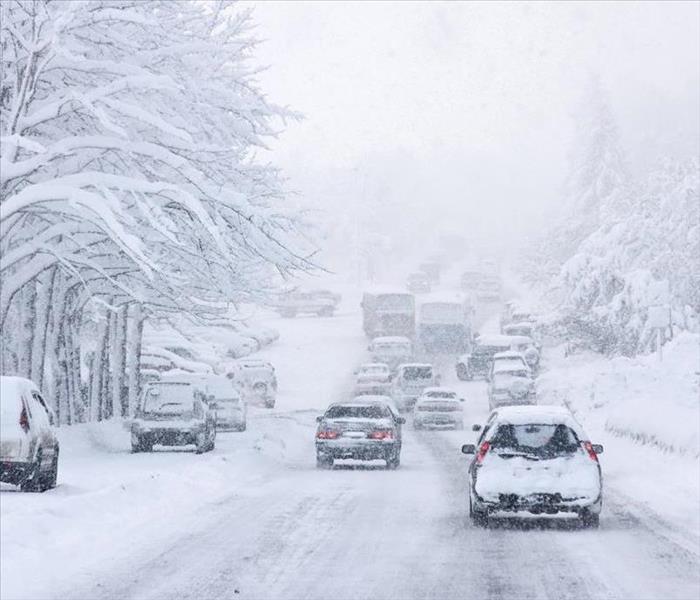 Burrrr!
Burrrr!
We have all been there, its's cold and snowing and you are having car problems. Follow these tips to help prepare yourself and your car for a winter storm.
- Start to prepare your car before Thanksgiving. It's easy to do it before it gets cold and snowy. Better too soon than too late.
- Check the tire pressure at least once a month through the winter. As it gets colder outside the air molecules get smaller and tire pressure goes down. Low tire pressure will make your car under preform. You can find the suggested PSI (pounds per square inch) on your tires or on inside the drivers side door jam.
- Have your battery tested. Nothing is worse than a dead battery when your freezing, not home or late for work. Also make sure you have jumper cables in case you or someone you come across need them.
- Check your windshield for cracks and make sure you have good windshield wipers. The cold can make your windshield crack and obstruct your vision. Bad wipers can cause all sorts of problems and are an easy fix.
- Inspect your headlights and brake lights. If its storming or dark your car can become very hard to see and cause an accident.
- Make sure you have warm clothes, proper winter shoes, and a blanket in your car in case you get stuck in traffic or your car breaks down. This could save your life
- Lastly ALWAYS make sure you have a couple water bottles in your car somewhere. No matter the time of year this could save your life or someone else's.
Follow these tips and you will be prepared for those winter storms that are bound to hit.
Prepare Your home for Winter Storms Before it's too Late
12/14/2017 (Permalink)
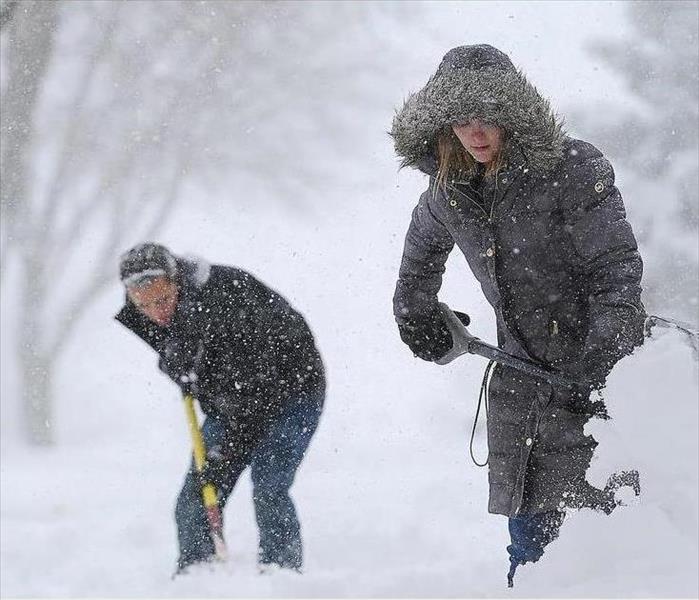 Be Ready Not Sorry
Be Ready Not Sorry
It's that time of the year again, time to prepare ourselves and homes for the brutal cold of winter storms. It is not something anyone looks forward to but it is best to be prepared.
Follow these tips recommended by www.ready.gov/winter-weather to prepare yourself and your home for winter.
Before Snowstorms and Extreme Cold
- Make a family communication plan. Your family may not be together when disaster strikes, so it is important to know how you will contact one another, how you will get back together and what you will do in case of an emergency.
- Make an emergency kit for at least three days of self-sufficiency.
- Keep space heater safety in mind: Use electric space heaters with automatic shut-off switches and non-glowing elements. Remember to keep all heat sources at least three feet away from furniture and drapes.
Prepare You Home
- Make sure your home is well insulated and that you have weather stripping around your doors and window sills to keep the warm air inside.
- Make sure you have a working carbon monoxide detector.
- Keep fire extinguishers on hand, and make sure everyone in your house knows how to use them. House fires pose an additional risk, as more people turn to alternate heating sources without taking the necessary safety precautions.
- Learn how to shut off water valves (in case a pipe bursts).
- Insulate your home by installing storm windows or covering windows with plastic from the inside to keep cold air out.
- If you have a wood burning fireplace, consider storing wood to keep you warm if winter weather knocks out your heat. Also, make sure you have your chimney cleaned and inspected every year.
- Have at least one of the following heat sources in case the power goes out:
- Extra blankets, sleeping bags and warm winter coats
- Fireplace or wood-burning stove with plenty of dry firewood, or a gas log fireplace
- Make sure you have a cell phone with an emergency charging option (car, solar, hand crank, etc.) in case of a power failure.
- Plan to bring pets inside.
- Know where the manual release lever of your electric garage door opener is located and how to operate it in case you lose power.
Follow these recommended tips and you will be prepared for those cold winters days.
What to Do After a Hurricane Strikes
11/2/2017 (Permalink)
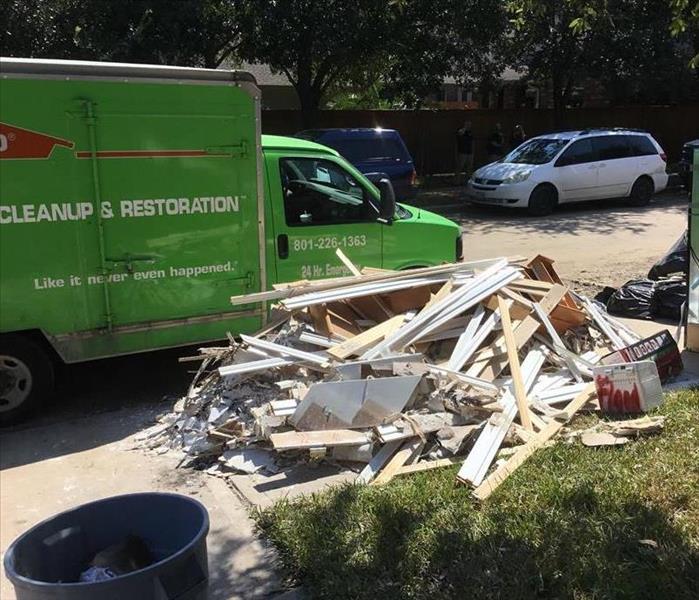 When devastation hits SERVPRO is there.
When devastation hits SERVPRO is there.
Recently the many areas have been hit by severe hurricanes and many homes and businesses have devastating damage. If you have been a victim follow these 5 must do's provided by "Today's Homeowner with Danny Lipford.
https://www.todayshomeowner.com/top-5-must-dos-after-a-hurricane-damages-your-home/
1- Photograph and Document Damage: Document the damage thoroughly with photos, as it will make the insurance claims process much easier. In addition to photos, keep a running list of all damaged items.
2-Conduct Emergency Repairs: Do only what's necessary to prevent further damage after a storm, such as covering broken windows with plastic or roofs with tarps to keep rain out. Don’t make or commission permanent repairs until an insurance adjuster reviews the damage. While it may be tempting to start cleaning up and throwing out damaged items after the storm, your insurance adjuster needs to see what happened firsthand to make you the best offer to settle your claim.
3- Secure Home Inventory: All home insurance policyholders should compile a home inventory of their possessions before a storm strikes, and keep it in a safe place. A home inventory is a list that documents the contents of your home. It should include photos, detailed descriptions, and purchase receipts when possible. Having a home inventory will make the claims process much easier. If you don’t currently keep a home inventory, start one as soon as possible. 4- File a Claim ASAP: Insurance companies sometimes work on a first-come, first-served basis; so it's in your best interest to file an insurance claim as soon as possible. When you contact your provider, let them know the extent of the damages and that you have an inventory of your possessions. An insurance adjuster will come to your property, assess the damage, and determine the size of your payout. 5- Secure Safe Lodging: If you home is uninhabitable, you’ll need to find your family a safe place to stay while your home is being repaired. The loss of use coverage in a standard homeowner insurance policy typically helps pay for your family's lodging as long as the damage is part of a covered claim. Check your policy or ask your agent to make sure you have this coverage and to determine its monetary value and time limits. Suffering damage or loss from a hurricane can be devastating, and recovery takes time. If you are prepared and plan in advance, repairing the damage will go much smoother.
Remember to be patient during the claims process. With the proper preparation, things will be back to normal soon.






 24/7 Emergency Service
24/7 Emergency Service
